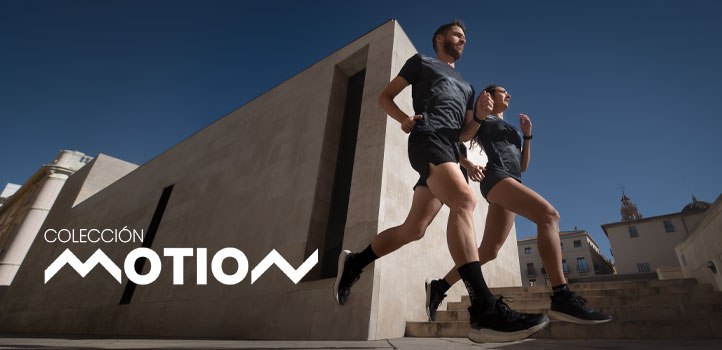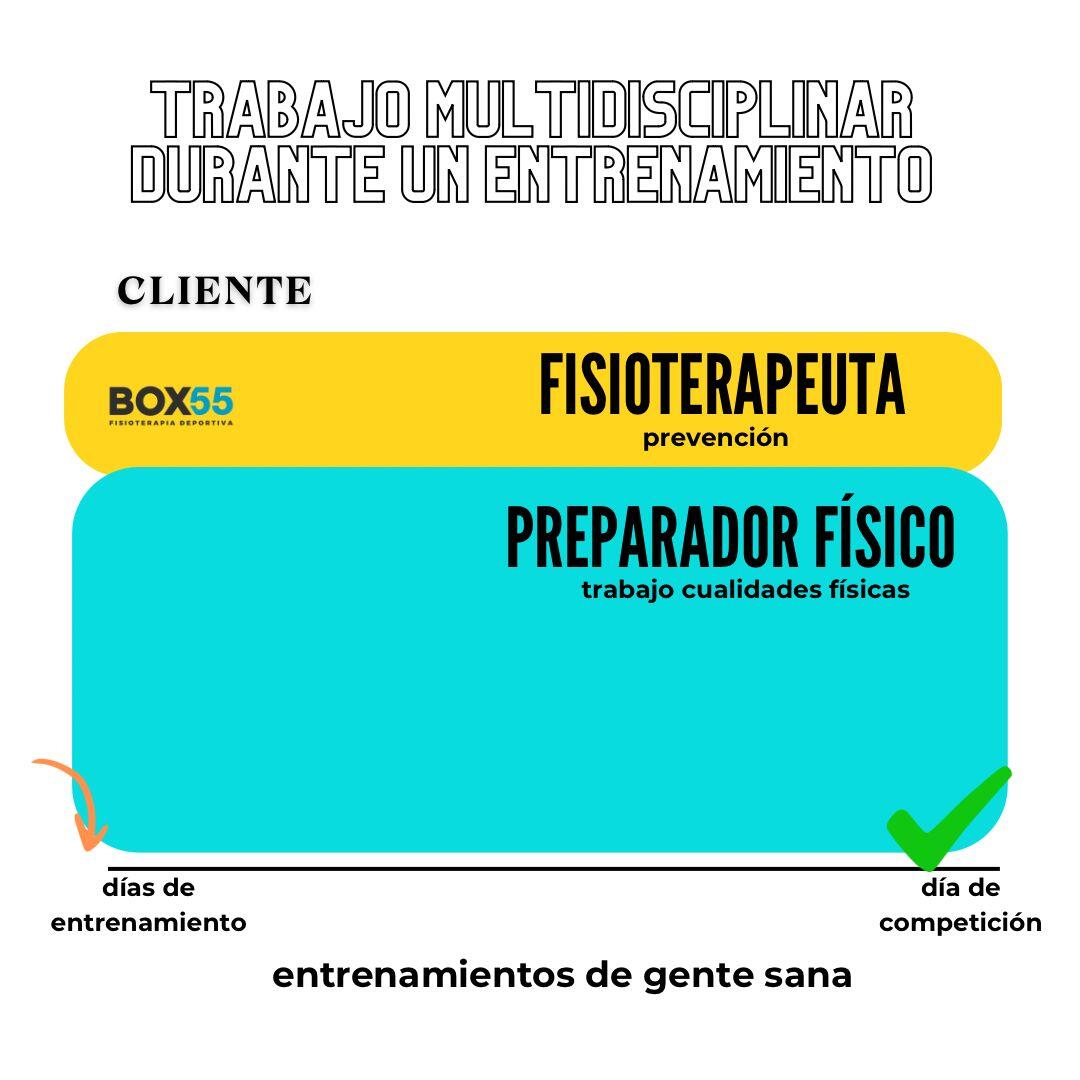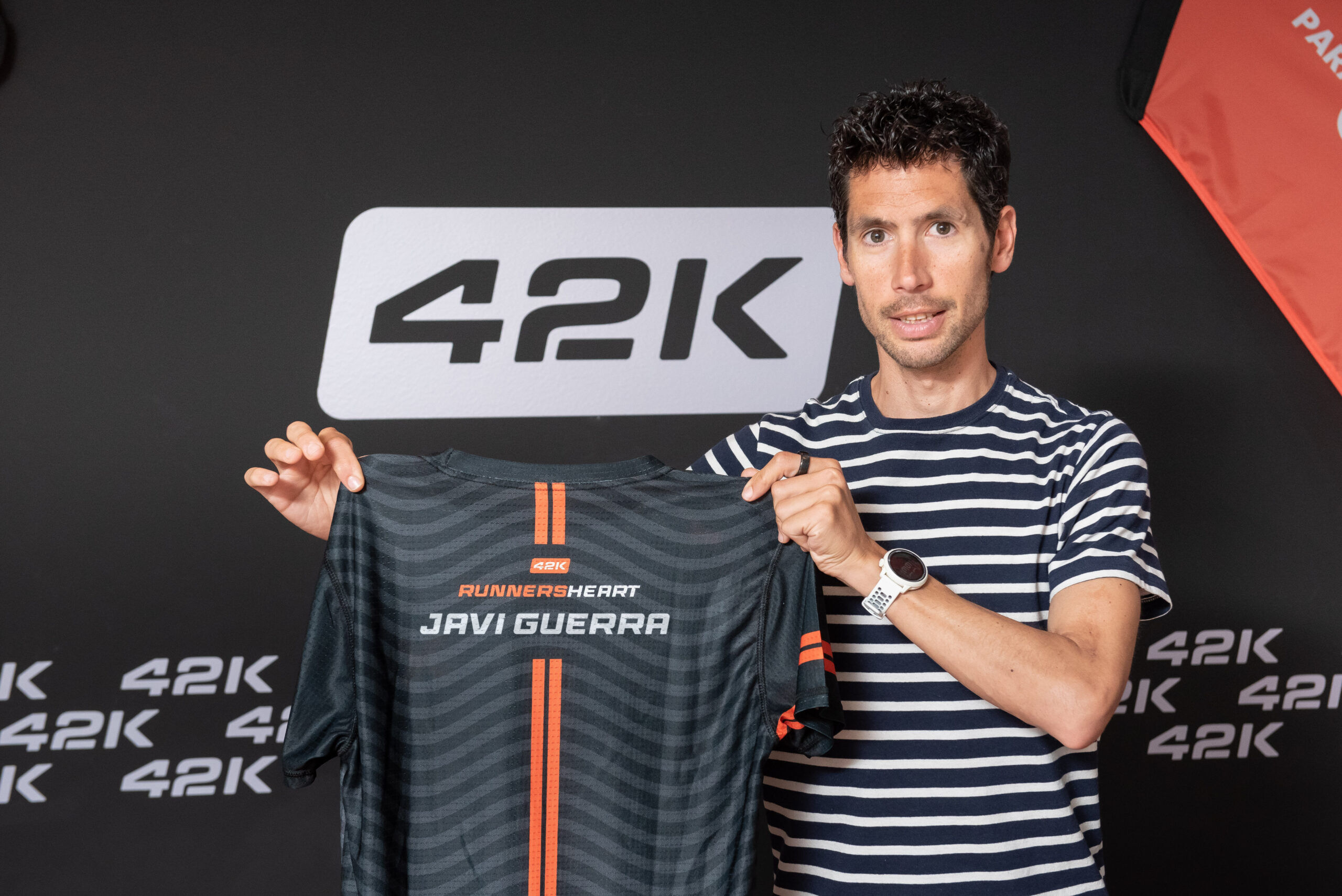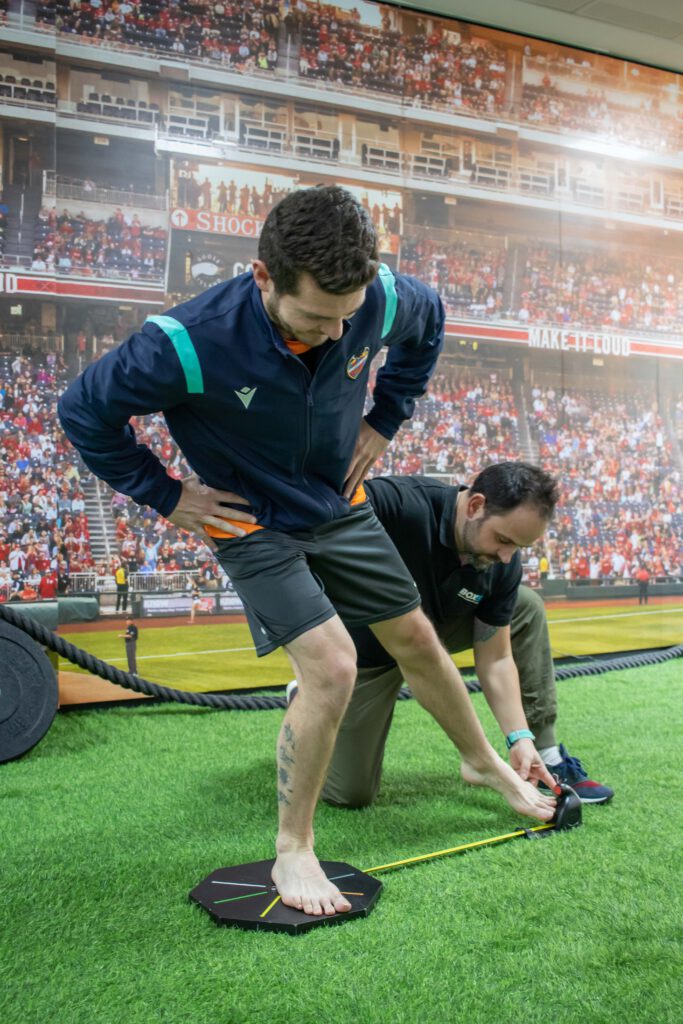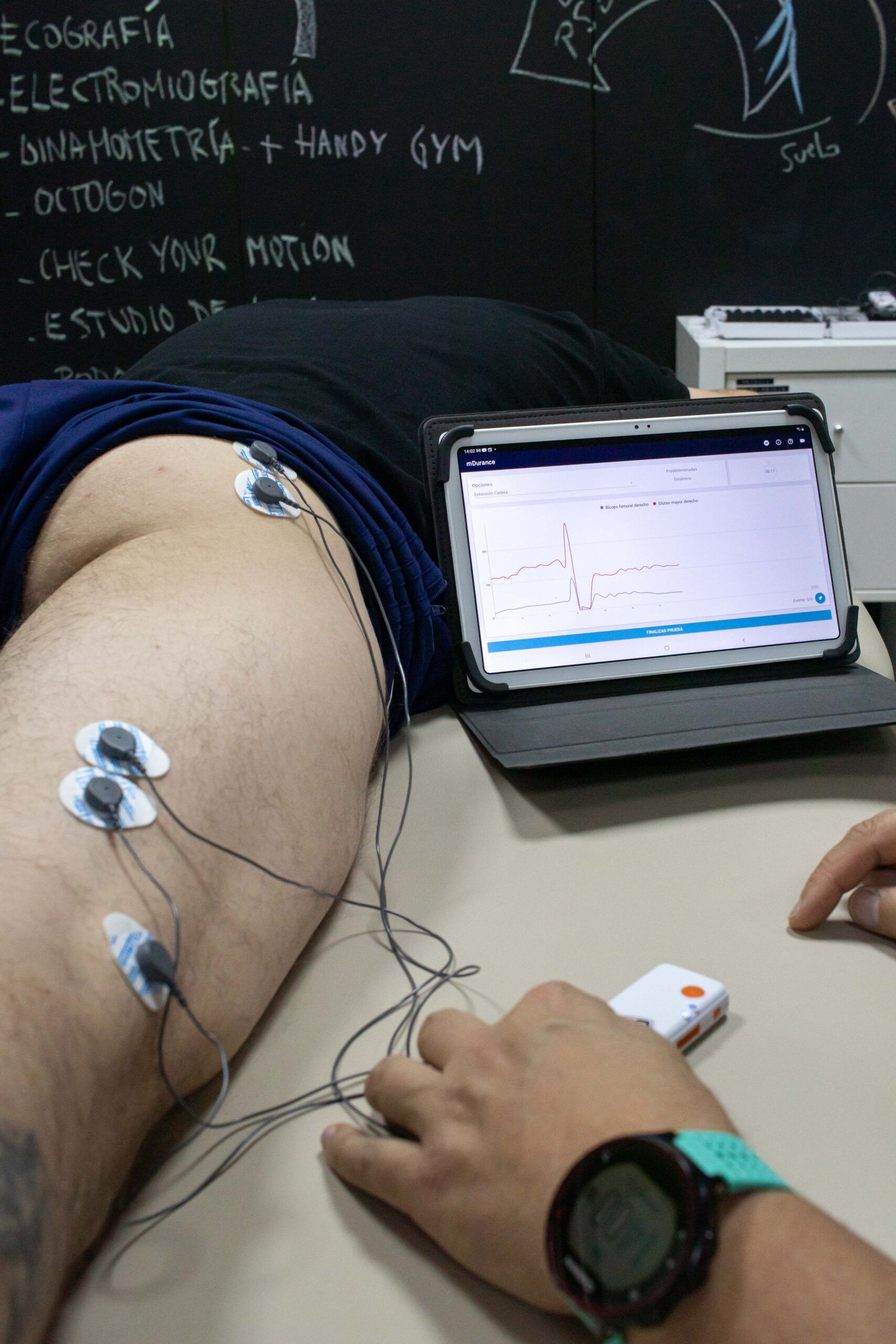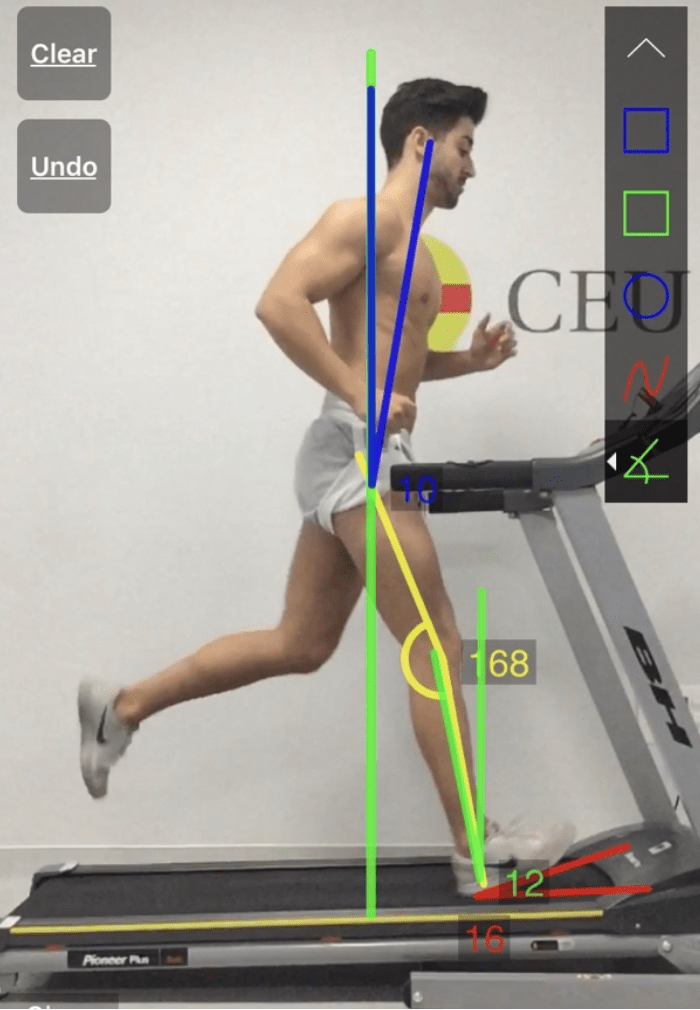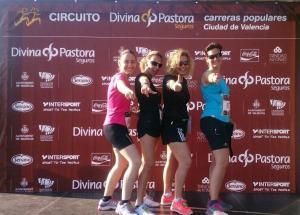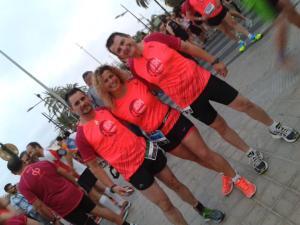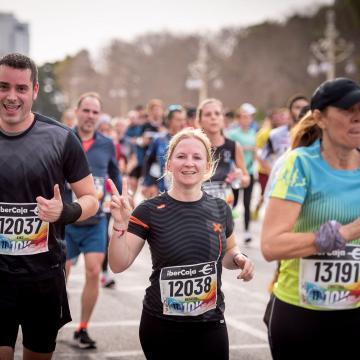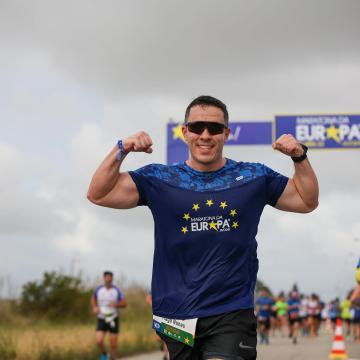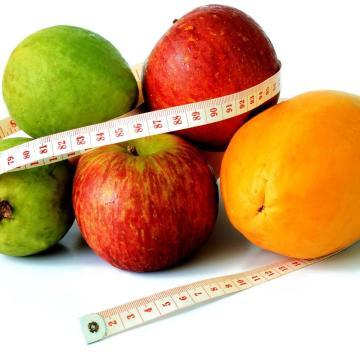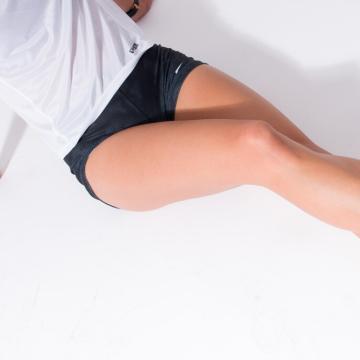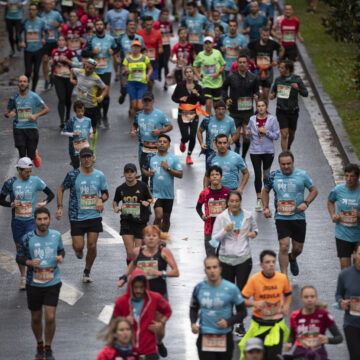Subscribe to our newsletter to find out about all the news and promotions, and automatically receive a welcome discount coupon in your email.
post -> Tips to prepare for a 10k
The 10k has become the popular test par excellence and for many people who are starting out in the running It is the first great competitive challenge in which to defend a number. In this article we are going to offer you tips to prepare for a 10k.
The 10k is a distance that more and more popular runners dare to do every day. The 'boom' of running In the last decade it has meant that many tests of this distance have been born and that almost all cities or towns of a certain entity have their ten thousand meter race.
In many 10k events (it also occurs in distances such as the 15k, the half marathon or the marathon) it is possible to find people who face the distance for the first time without adequate preparation to complete the test within the time allowed by the organization; The problem, however, is not arriving outside the time limit but rather subjecting the body to an effort for which it is not sufficiently prepared.
We have turned to the specialist Marcos Greus, high-performance trainer and coach in endurance sports, to ask for advice for someone who wants to prepare for a 10k (their first 10k) and do it in a sensible way and with the peace of mind of having the necessary preparation to face the challenge.
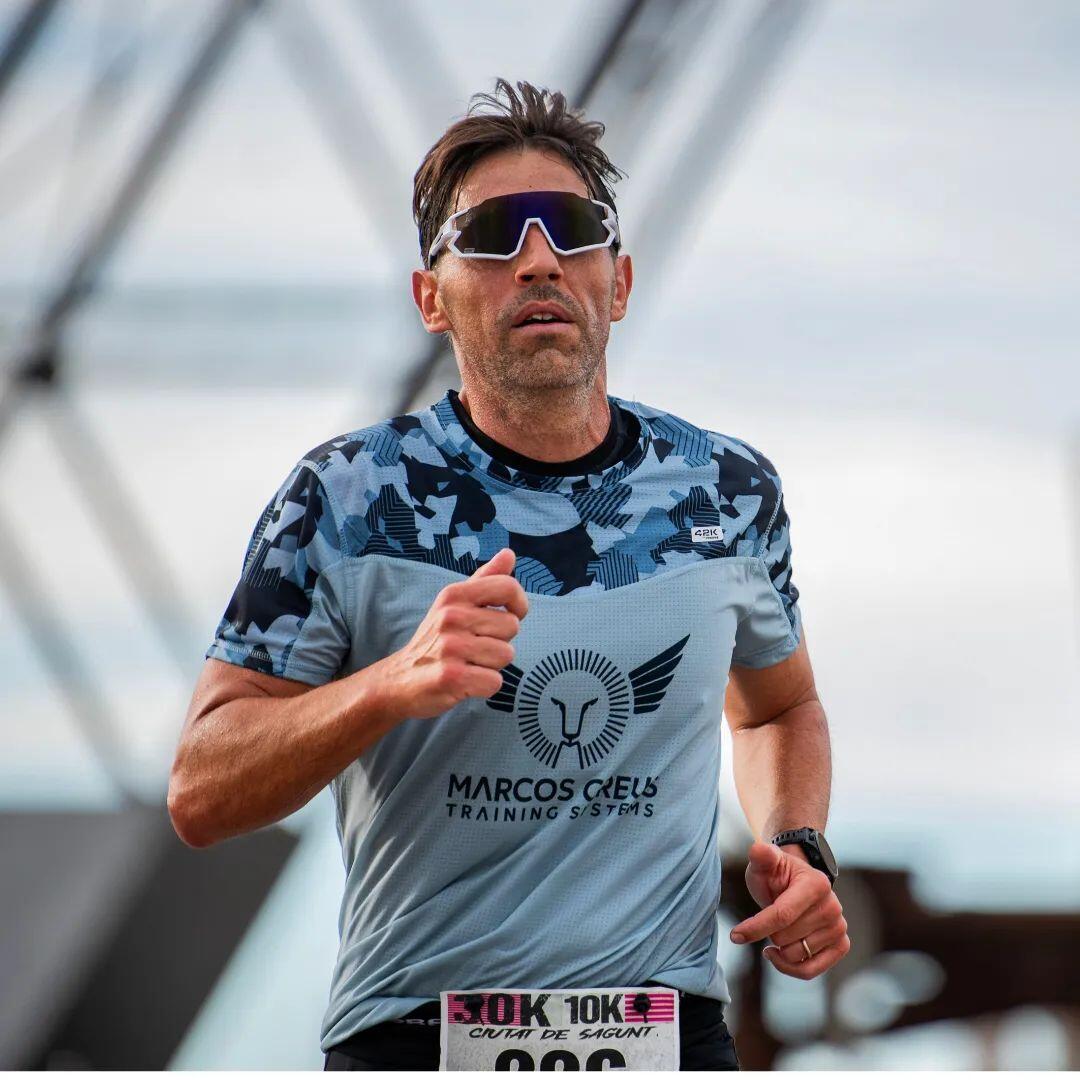
We have asked you a series of questions, taking as a starting point the situation of a popular runner who is already able to endure 30/40 minutes of continuous running, who goes out running 3 days a week and who is willing to increase your training time (plus time per shoot and adding a fourth day of training).
Preparing for a 10k requires being in shape
Preparing for a 10k is usually the first big sporting challenge for many people who get into running. runningIs it really a distance suitable for anyone?
Many people start running for health reasons, to feel well, to reach or maintain an adequate weight... As long as there is no medical contraindication, it is a good decision to start running, but running is a demanding physical activity that requires minimal preparation to avoid scares or problems; I always say that You have to be in shape to start running and not run to be in shape..
When you start running it is very important to be sure that you are in physical shape that guarantees that you are not at risk of injury.
It is more common than we think to find people who start running after a long time of total inactivity, who are overweight (with the risk that this can pose for the joints), without muscle tone and without having a prior medical check-up. And at the height of absurdity there are also cases of people who dare to run starting with popular races, which is a blunder and recklessness.
The boom of running that has been experienced in recent years has meant that many people sign up for races without adequate preparation and in some cases even without having barely run before. I have known cases of people who have signed up for races right away because they said that they found a stimulus to train and motivate themselves to run.
Prepare a 10k requires being in shape as a first requirement and, furthermore, committing to carrying out preparation work that is demanding because we are faced with a distance that seems very affordable (and really is with the right preparation) but that is not within everyone's reach because it involves running for around an hour uninterruptedly. ; It's one thing to run 20-25 minutes and quite another to run 60 minutes continuously..

How long is it advisable to have been running to consider running a 10k with guarantees of finishing it correctly and without problems or taking risks?
In general, my recommendation for anyone would be to face the challenge of preparing for a 10k when you are really sure that you can do it. run between 10 and 12 kilometers with solvency. What do I mean by “solvency”? Well, the cardiorespiratory system, the muscular system and the bone and ligamentous system are capable of supporting 10 kilometers at an easy pace; At that moment and not before is when you should think about tackling a 10k.
Many people go for their first 10k without having gone beyond 7 or 8 kilometers and, fortunately, nothing happens to the majority, but it is a distance in which there are risks that can cause discomfort or even injuries that could be avoided with a little more preparation, perseverance and, above all, patience. In recent years impatience has prevailed in the running popular; Fear and respect for distances have been lost, which is something that seems worrying to me.
When you can run 10 kilometers reliably at an easy pace, it is time to slightly increase the intensity and volume of training kilometers to face a 10k.
And why increase intensity and volume in training? Well, because in a race, inevitably, you will run at a faster pace than in training; When you put on your number it is normal to want to give your best and the body has to be prepared to run at a higher intensity.
Therefore, the sequence of steps to follow before facing the first 10k would be...
First step: Be able to run 10 kilometers with ease at an easy pace.
Second step: When you are already able to run 45-50 minutes three times a week with ease, it would be a good time to think about running a short race, 5 or 7 kilometers, to have a first contact with the competition before making your debut in 10k.
Third step: Increase the intensity and volume of kilometers to prepare the body for the highest intensity that we will demand of it on race day. How to increase the intensity? With short fartleks, such as 10 one-minute changes of pace with breaks (light jogging, without stopping) of 2 minutes. How to increase the volume? Running at a calm pace 12/13 kilometers.

10-12 weeks of specific preparation to prepare for a 10k
How long before the test would it be advisable to start training to adequately prepare for a 10k?
It depends on the starting state of each person; Starting to run from scratch is not the same for a sedentary person as it is for an active person who exercises or practices other sports regularly.
The starting state of each person will be decisive in establishing what type of training, how many days of training and what the appropriate planning should be to aspire to run a race safely and without risk of injury or health problems. .
At this point I want to claim the importance of a professional in Physical Activity and Sports Sciences being the one who determines what the optimal planning is and is also the one who guides the path of preparation; Only a physical preparation professional will be able to objectively determine what a person's starting physical state is and, therefore, what is the most appropriate preparation to face the challenge of preparing for a 10k.
In the case of an active person (not sedentary), who performs physical activity with some regularity and who does not have any physical limitations or medical contraindications, the normal period to prepare for a 10k would be 10-12 weeks of training running 3 times a week and doing at least one day of strength training.
What is essential from the point of view of a physical trainer before starting to prepare for a 10K?
Determine very well what the person's starting point of fitness is. Something very important for me is to make a anamnesis Sports, that is, an analysis of the medical history and personal and family history to be able to adjust the training loads as much as possible to the reality and circumstances of that person.
As I have pointed out before, starting to train a person who is coming from a period of inactivity (whether due to injury or disconnection from sport) or a sedentary lifestyle is not the same as starting to train someone who already does some sporting activity and who, therefore, already has muscle toning or adaptation to start with specific training focused on running.
It is essential to determine the starting point and carefully examine what is in the 'toolbox' of the person who wants to prepare a sporting goal.
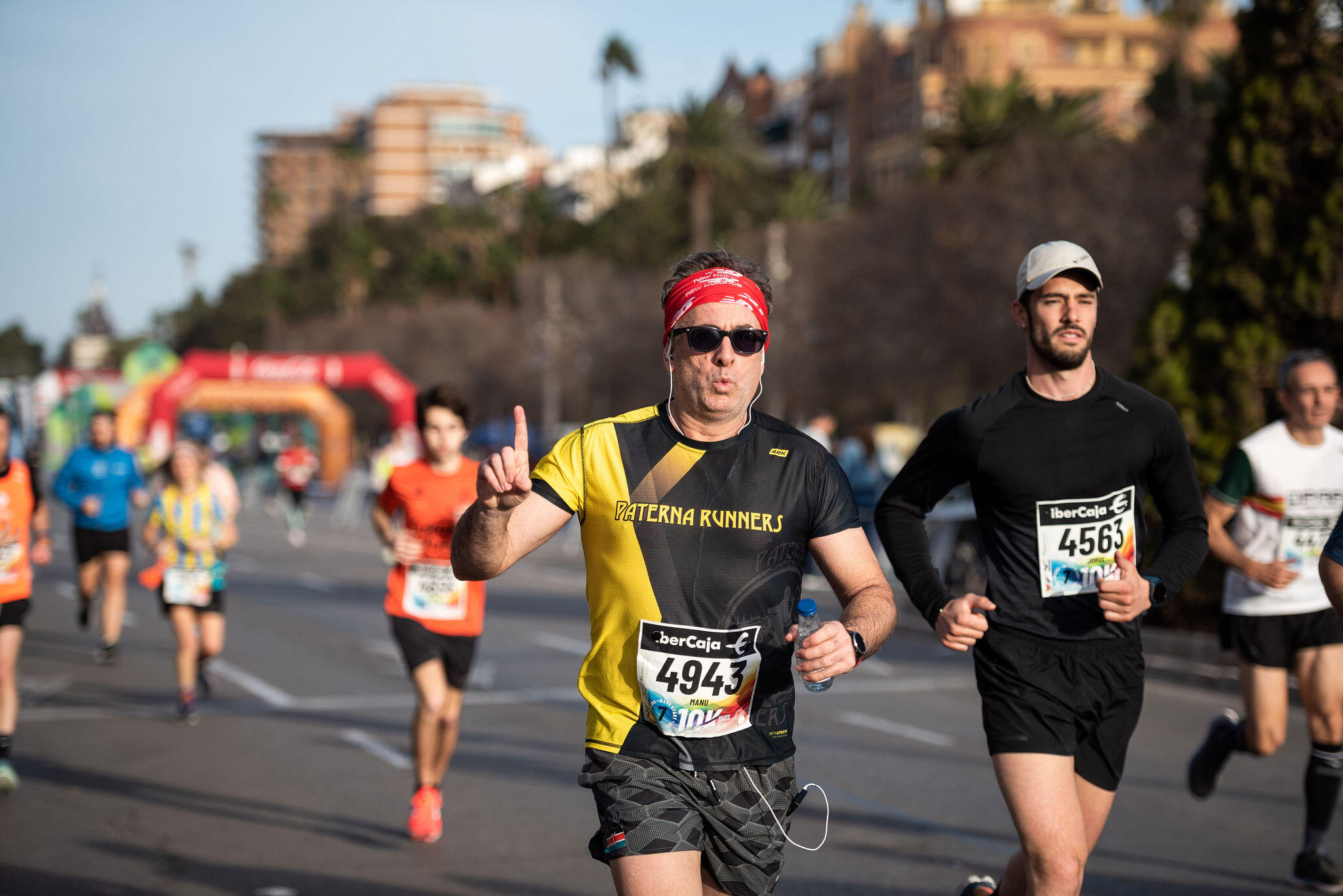
What do I mean by what's inside 'the toolbox'? I'm going to explain it with an example: person and a half on Saturday and Sunday; In person X's toolbox there is also the possibility of going to a gym for one or two days or doing a day of pool training...
With all that information, with everything I know is in person X's toolbox, I can design and build the most efficient training possible to address the sporting goal. That is why I say that for me the initial history of the person/athlete is essential to be able to properly adjust training days and workloads.
Yes, you have to train strength to prepare for a 10k
Is it important to incorporate strength training into preparation to debut in a 10K?
Absolutely yes. Strength is the basis of any physical preparation and it is important to prepare for a 10k. For someone who wants to face a 10k for the first time with the aim of finishing it with solvency but without pretensions of making a mark, specific work in the gym or with weights is not necessary, but a self loading work; This work could be with tires, TRX, on stairs, on slopes...
Strength work is necessary because it will allow train more, better assimilate training loads y reduce the risk of injury. And why do I say that it will allow you to train more? Well, because by doing strength work you can be more consistent in training and in the end the key in any endurance sport is perseverance and patience. The person who is constant, who does not skip or miss workouts, is the one who progresses.
In a 10k you take between 8.000 and 9.000 steps, which means supporting your body weight multiplied by 4 each time you step on the ground; If at the bone, muscle, tendon and ligament level you are not strong enough and prepared to withstand this enormous volume of impacts, discomfort and injuries may appear, and it will be of no use to wear very expensive shoes.
The most common mistake when debuting in a 10k: not keeping pace
What mistakes should you try to avoid when running a 10k for the first time?
The most common mistake of the beginner is usually getting carried away by the emotion of the race and not keeping track of the pace.
Act quickly. avoid going out at inappropriate paces because you end up paying for that after kilometer 7. You have to plan your pace from the start and run with a cool head at all times, but especially in the first kilometers.
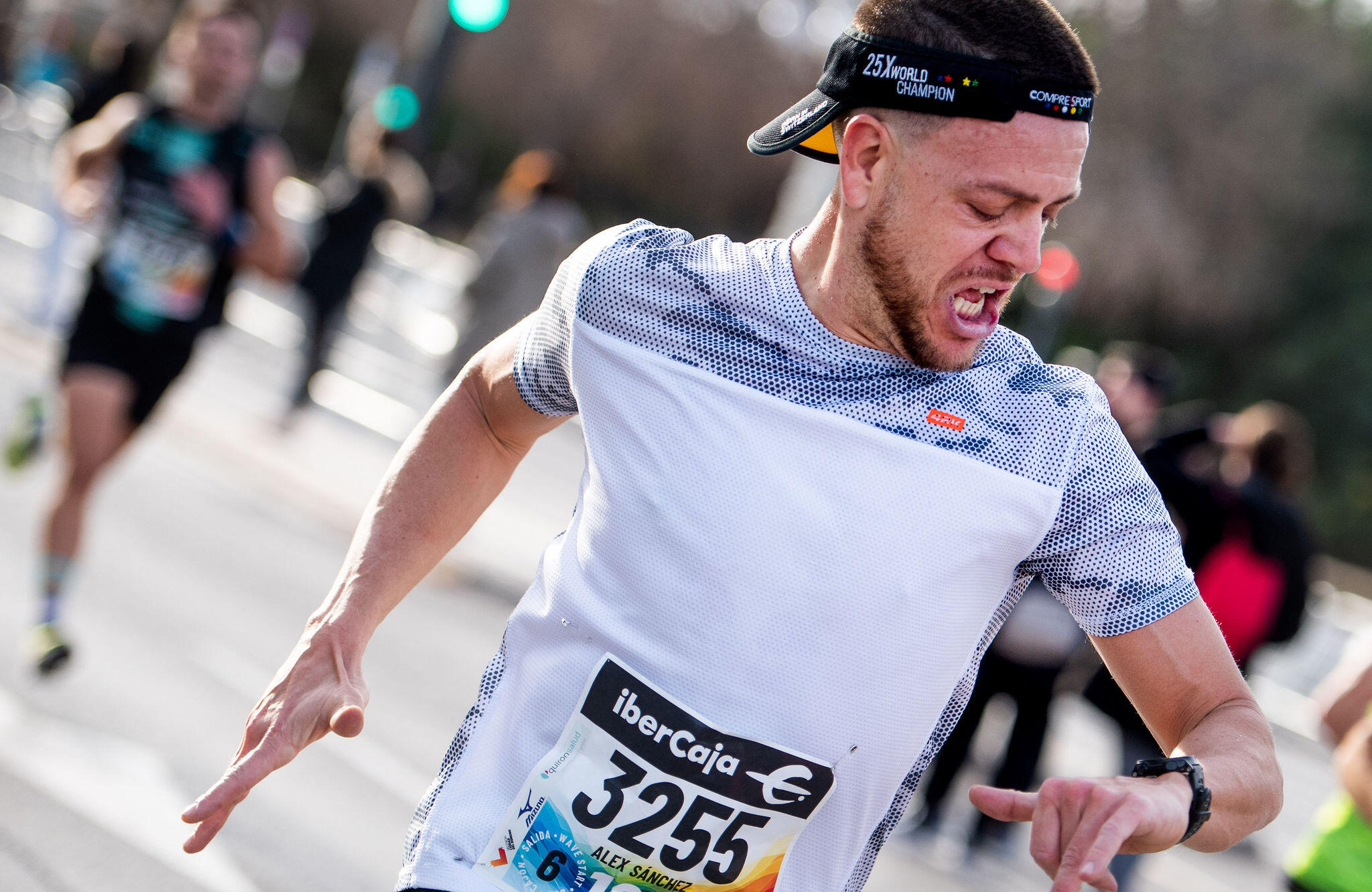
I always tell beginners in any distance, be it a 10k or a half marathon or a marathon, that you have to run at the rhythms or pulses that have been trained and assimilated. You should not overestimate yourself in the first kilometers no matter how good the sensations are; That feeling of believing that the bib number is going to give you that extra performance to run faster throughout the entire route is very treacherous.
Another indication that I always give to the runners I train is that the day before and the day of the race There is no need to do anything that has not been previously trained..
There is no need to do “experiments”. And on race day you don't have a different breakfast, you don't drink more coffee, you don't wear new clothes, much less shoes (which may sound like a joke, but I know of cases), you don't take an energy gel before the race because it's a recommendation from someone with a lot of experience, you don't drink something during the race that you haven't tried before...
On race day you don't have to do anything new; Everything that is done on race day has to be trained and assimilated prior to the race.
What would be important to be clear about before considering putting on a bib in a 10k?
The most important thing is to be clear that you want to run a race. There are many people who end up putting on a bib because of “pressure”. I know of cases of people who sign up because friends or family insist on doing so when they have been running for some time and they do it almost out of obligation.
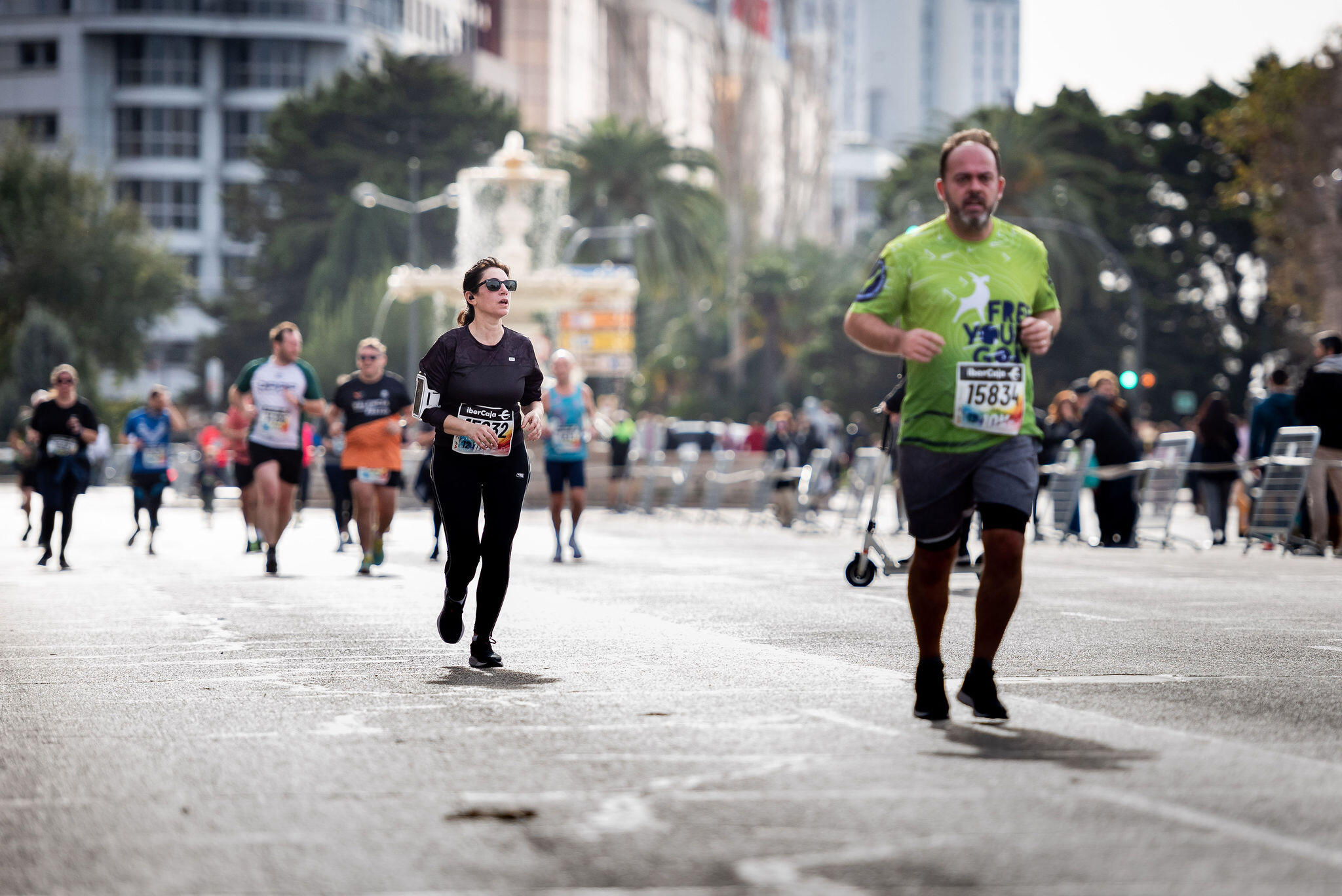
Facing a race, especially for the first time, generates stress that not everyone likes or enjoys. There are many people who like to run for health or for fun or to disconnect and who don't like to compete, and that's okay. Putting on a bib and facing a 10k is something you really have to look forward to. It is absolutely respectable that someone decides to run and has no interest in the competitive aspect.
Surely you have been adding kilometers for a long time and you have decided to start your first 10K. For sure, as the day of the test approaches you will begin to feel nervous and perhaps have some logical doubts. Do not worry!
train your mind
The mind can be our best ally and our worst enemy. So that you can control your pre-race nerves, adopt training routines before going for a run and load yourself with positive thoughts. On the day of the test, take a deep breath and trust your ability and effort. We recommend that you have your family and friends close by, they will give you confidence.
That does not control the route to you
Probably after 5 kilometers you will feel a drop, but you must change the "I can't" to "I'm going to make it." Dosage your effort, analyze and know the route well and do not get carried away by the rhythms of the rest.
Train your body
El power and endurance training it is vital. If your body is familiar with minimal physical activity, in 42krunning We recommend that you go running two or three days a week. Alternate training on flat surfaces and on hills to improve your endurance and sprint with changes in pace, and leave another day for easier training. If you are not used to it, start by combining fast gears with slower gears.

To strengthen your muscles and increase your resistance, run wearing a correct body posture. Keep your abdominals tense and your back straight, avoiding the curvature of your lower back. Run with your pelvis in a vertical position and, when stepping, avoid all your weight falling on your heels.
The power of stretching
Warm up before the competition and stretch your muscles afterwards. Both processes will help you minimize the risk of injury and they can serve as an exercise in mental preparation. Do not forget that you should not only stretch your legs. In the exercise of running the whole body is activated.
Real goals
Training to run a 10-kilometer race takes time and effort. Plan the workouts and be realistic with the goals you set for yourself. If you have only been running for a week and are already signing up for the competition, you are likely to suffer an injury.
Beware
Just as training is paramount, so is correct rest, hydrationlimentation. Do not get obsessed with the pace or the mark you want to achieve, the important thing is to be healthy to be able to try.
create a habit
The last of the factors to be treated is the experience. To create in you the sports habit and the habit of running, it will be necessary to dedicate enough time to it. You should not be in a hurry and the ideal is that you start the training for your first 10kAt least twenty-one or thirty days before the race and that you always listen to your body, which is wise.
By applying these tips, you will enjoy a 10k race with greater safety for your health. write them down!
Do you want to improve as a runner? Put yourself in the hands of professionals. To achieve sports goals, whether elite or popular, you must seek advice from someone who can really help you with judgment, seriousness and professionalism to improve as a runner in the section of training, preparation, nutrition, injury prevention and recovery... etc.
Internet and social reds have been a infinite amount of information available to anyone who is starting out in sports, information that can be very diverse: training, sports planning, nutrition advice, recommendations for injuries...
In many cases this information comes from serious sources, but has been provided in a generic manner, without taking into account the particular case of a specific person or patient. There is also information that comes from very unreliable sources and that should be ignored because in addition to not helping you improve as a runner, it can cause problems for you.
To improve as a runner you have to seek the right advice
We live in a time in which everyone has access to information at the click of a button and in which it is very fashionable to publish content on social reds about sports, nutrition, training... and, of course, physiotherapy.
Many professionals who have studied and achieved the corresponding degrees that accredit our knowledge and, therefore, the competence to offer quality services and advice to athletes, we witness with astonishment, disbelief, patience and, sometimes, indignation at the absurdity of finding, on a daily basis, on social reds people without qualifications or degrees pontificating on subjects about which they have little knowledge.
Some even profit from their advice, recommendations and advice based on knowledge that they do not prove (probably because they lack the required qualifications). Unfortunately, many of their clients are not aware of the risk they run by putting themselves in the hands of people who advise on training-preparation, injury recovery, nutrition or physiotherapy without training and without qualifications to prove their competence.
I am going to try to clarify which professionals can help you achieve your goals (and therefore improve as a runner) and which false professionals put your health at risk due to lack of preparation, lack of knowledge or desire for prominence.
In my opinion there are two basic rules to start dealing with this topic:
- Practicing a sport does not make you a professional specialist in it.. For example, no matter how good you are at playing soccer, you are not a coach; No matter how good you are at CrossFit, you are not a CrossFit coach; and, logically, no matter how good you are at running and no matter how good a time you have in the marathon or 10K, you are not a sports coach. running/athletics.
- The type articles… «7 definitive exercises to have iron legs» o «training to lose 50' in 10K» o "core training to be a better runner" that you find on the Internet or on social reds are not the ones that are going to be best for you (they may even harm you); They are articles written for other purposes (improve positioning, improve visibility, attract attention, gain followers...) but they are not really designed for you.
My advice is that you look for a true professional who is trained (and qualified, because that is a guarantee of having acquired knowledge), updated and, above all, who has experience in what you are looking for, be it training-preparation, nutrition or physiotherapy. If you really want to improve as a runner, don't put yourself in the hands of people

Without health there is no achievable goal
I frequently see people on social media offering information about physiotherapy or injury recovery (which is my professional specialty) without any criteria and, worst of all, without taking into account that giving inappropriate advice can lead to physical problems and even injuries. And injuries, I know from professional experience, destroy people's dreams and sporting aspirations. A phrase that I repeat ad nauseam with my patients and also when I teach classes is "without health there is no achievable goal".
With this article I intend to clarify the role of each of the professionals that you may encounter as a runner in your sporting activity (and to improve as a runner it is very important to be clear about this).
The first thing I want to make clear is that If you have an injury, you should go to a medical professional. to diagnose the injury; From there, I consider it very important to clarify the distribution of roles between physiotherapist, physical trainer and coach:
- Un physiotherapist trabaja so you can train.
- Un physical trainer trabaja so you can compete.
- Un coach trabaja so you can perform.
Are you a patient or client? An important difference
A very important aspect to keep in mind is to know if you are a patient or a client, what difference does it make? Well, very simple: if you are injured or need to prevent injuries In order to train, the professional you should turn to is a physiotherapist, because you are a patient. If you are healthy, you are a client and what you need is a degree in Physical Activity and Sports Sciences.
If you are a patient, you need a physiotherapist
The physiotherapist is the professional who is in charge of improving the injured structure while respecting the tissue healing process; In addition, it works on the sports rehabilitation of the injury or preventing it, based on physiotherapy tests that help ensure that you can train without pain or discomfort to give quality to the training of sports professionals, who are the physical trainers of yesteryear and who Now they are graduates in Physical Activity and Sports Sciences.
A physiotherapist accompanies the athlete when he is injured; and when he is not injured, the physiotherapist can help him prevent with exercises evaluated through functional physiotherapy tests, for example with the Valobando App (you can learn more about what it consists of in the article «The importance of the sports physiotherapist»), generating specific work for the athlete with a health objective, since they are health professionals.
A physiotherapist can make a physiotherapy diagnosis, which, together with a previous medical diagnosis, serves to design recovery work and also serves to avoid relapses.
If you are not injured, you are a 'client' and need a degree in Physical Activity and Sports Sciences
The graduate in Physical Education or currently the Degree in Physical Activity and Sports Sciences is the professional who is in charge of preparing the runner who is healthy (not injured) to compete. If you are not injured, you are not a patient, but a client with a competition goal in mind.
The graduate in Physical Activity and Sports Sciences is the professional who is in charge of, once your physical qualities have been evaluated, preparing you so that you can compete to the maximum and improve as a runner; he is in charge «to look for your best version», which is an expression that is very fashionable now. To improve as a runner, it is essential to have the advice of an expert in physical preparation to be able to get the best out of your physical qualities.
Furthermore, a graduate in Physical Activity and Sports Sciences who is specialized in high performance in endurance sports is the one who can best guide you in planning training to achieve a specific goal.
Now, can a physical trainer readapt an injury? And a second question: can you train a patient with an injury?
The answer to the first question is a resounding NO because it has not been trained for it; Doing so would be a clear example of work intrusion, in addition to putting the 'patient's' health at risk, because a runner who requires rehabilitation due to an injury is a patient and not a client (which is why I previously made the distinction between patient and client).
The answer to the second question is more complicated, but I will try to clarify it: a patient (a runner with an injury) must be supervised by a physiotherapist in the stretcher and readaptation phase to the sport, but is not exempt from working on the physical qualities that your sport requires and that is the part in which the Physical Activity and Sports Sciences technician intervenes, but always under the supervision and tutelage of a physiotherapist.

The physiotherapist and the degree in Physical Activity and Sports Sciences go hand in hand in the training and recovery process of an athlete. It is a professional tandem that can really help anyone interested in that goal improve as a runner.
Once the runner has recovered from the injury, the person in charge of directing the training process is the graduate in Physical Activity and Sports Sciences, but the physiotherapist is obliged to generate the correct situation to that the athlete does not get injured and can train to the maximum with his coach.
At this point I would like to talk about other professional profiles (for some of them it would be more appropriate to talk about 'pseudo professionals'), especially because in recent years they have proliferated on social reds giving all kinds of advice to runners (preparation, nutrition, training, injury prevention, injury treatment, health advice...) and, honestly, I think that many of them cannot help you improve as a runner.
- Massage therapist. Person who has studied a course on how to give massages, but cannot treat pathologies because they have a very poor knowledge of anatomy. You have ‘customers’; You can go to it simply to release muscle tension, but not if you have an injury or pathology.
- Chiropractor. The chiropractic It is based on practices and beliefs that are considered pseudoscience. They are dangerous because with little training in anatomy they manipulate vertebral joints and that can pose risks to people's health.
- Monitor. There are two kinds:
- Room Monitor or Personal Trainer. Normally it is a Higher Technician in Physical and Sports Activities (TAFAD), a Vocational Training qualification that is included within the branch of Sports; They train for two years, but logically they do not have the knowledge of a degree in Physical Activity and Sports Sciences. It is a hybrid between the professional who wants to get the most out of you and get you in shape. There are also 3-month courses, it is a course with little training and low quality.
- Monitor of disciplines such as Pilates, yoga, boxing, swimming, paddle tennis, tennis, etc., they are professionals in activities specialized in a method or sport.
- Druid, shaman, brujo, neighbor with powers, friend who reads hands… They are people who help spiritually and really only help those who believe in superstitions.
- Acupuncturist. Person who inserts needles to perform acupuncture treatments; Not to be confused with physiotherapists or doctors trained in traditional Chinese medicine.
- Expert in nothing and everything. This is a dangerous profile: his sporting experience is all his knowledge and he believes that this qualifies him to coach others. Unfortunately, I have had several examples in my clinic of runners injured by following the advice of that friend. "who has been running for many years and has won several popular races", which is why he considers that he can serve as a coach for anyone.
- Youtuber, content creator, influencer… This is a profile that has grown on social reds and that, in my opinion, has every right in the world to generate content as long as it does not delve into professional fields that have to do with health, and for me health It is nutrition, training, physical preparation, injury recovery, physiotherapy...
In conclusion, I believe that health must be taken very seriously. In general, most true professionals are respectful of their areas of action. Specialization is essential to provide health guarantees to athletes. A physiotherapist cannot delve into the terrain, for example, of a podiatrist, in the same way that a traumatologist cannot act as a nutritionist or a physical trainer cannot determine how recovery from an injury should be done.
Fartlek It is one of the terms that is part of the universal language of running. Fartlek is a swedish word which means “speed game” and give name to resistance training method developed by Swedish coaches Gösse Holmer and Gösta Olander in the 30s
Almost one hundred years after its implementation, this training method continues to be widely used in athletics and also in sports. running popular.
In this article we are going to analyze the benefits of fartlek, how to do it and what it is for.
Fartlek or variable continuous training
Resistance training methods can be grouped into two types: constant continuous training y variable continuous training (fartlek). Continuous training is characterized by no recovery breaks.
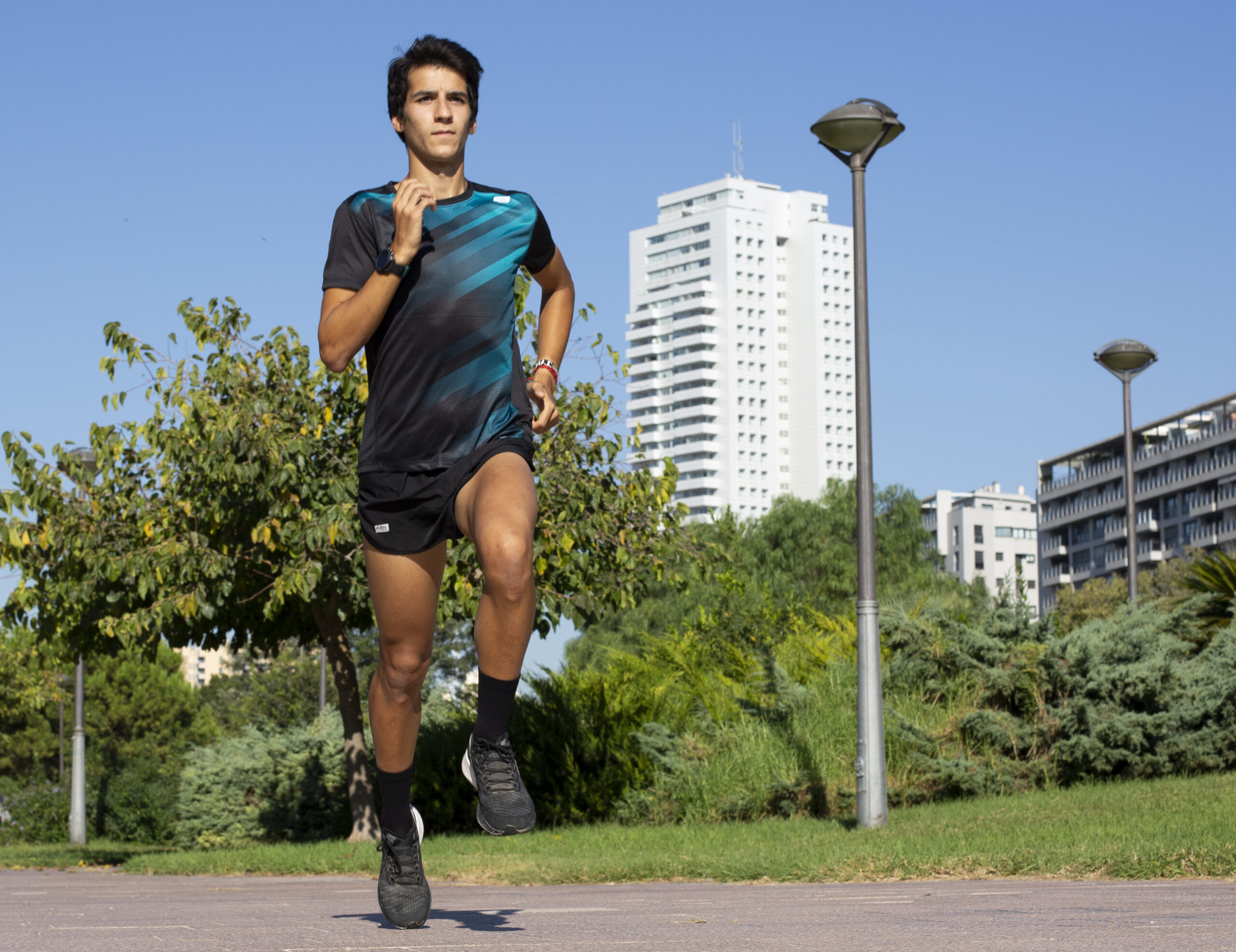
The training continuous constant serves to improve the aerobic resistance and, in summary, it consists of traveling a long distance (more than 30 minutes of continuous running) at constant intensity, no change of pace and without taking recovery breaks.
The training continuous variable or fartlek, instead, introduce changes of rhythm which can be forced by the terrain or the speed of the runner. That 'adaptability' to changes of pace is why its creators baptized it as a “speed game” (fartlek).
Fartlek is a highly effective and versatile training method, used in the running to improve la resistance, speed and aerobic capacity.
This type of training combines intensity intervals with lower intensity recovery periods; Depending on the level of the runner, recovery can be done by running or walking.
It is a training in which there are no breaks for recovery; You do not stop running and alternate changes of pace (it can also be done using ''CA-CO'', which is WALKING and RUN; this option is the most recommended for beginner runners or for runners who are returning after a long time break due to injury, illness...), it can also be done on varied terrain, which makes it a powerful tool for runners of all levels.
Benefits of fartlek training
Let's see below the benefits that the variable continuous training method or fartlek can bring.
- Improvement of aerobic and anaerobic capacity. Fartlek involves alternating intense rhythms (depending on our goal, more or less intensity) and softer rhythms. This It helps improve the aerobic capacity, which is the body's ability to use oxygen during prolonged exercise, such as anaerobic capacity, which refers to the ability to perform intense efforts for a short period without depending as much on oxygen.
- Increased resistance. The variability of rhythms in the fartlek simulates the variation in intensity that can occur with changes in pace in the race. This improves mental and physical resistance, preparing runners to cope with different conditions during a competition. In the winter season, some athletes who prepare cross (a long-distance athletic modality that takes place partially or totally in cross country) they usually use the fartlek in their training. Cross country is a modality that is run on a circuit and in which a constant pace is not maintained; 4-5 laps are usually completed (depending on the competition) on a circuit of about 2 kilometers in which there are many turns, ups and downs, irregular surfaces... The fartlek can simulate what happens in a cross-country race.
- Burning calories. Of interest, high-intensity intervals in fartlek increase calorie burning during training. This can be beneficial for weight loss or maintaining a healthy weight.
- Specific training for races. The fartlek can be adapted to simulate the conditions of a specific race (such as a 5K, a 10K, or even a half marathon), greatly helping runners adapt to the paces and challenges they will encounter in real competition.
Without going much deeper into other more specific benefits for elite athletes, as a summary we could indicate that fartlek promotes improvement of rhythm and speed, allows you to obtain a diversity in training, helps improve the mental preparation and adaptation to diverse terrain facing the competition.
Alternating between faster and slower paces helps runners develop a better sense of rhythm and speed. Fartlek allows you to vary training and avoid monotony, something that can be especially useful for maintaining motivation and avoiding stagnation in performance.

It is also notable that high intensity intervals in fartlek they challenge the mental resistance of runners, helping them overcome fatigue and improve their ability to manage discomfort during races; and if the intensity of the intervals varies depending on the type of terrain (uphills, downhills, uneven surfaces) it can also be of great help as preparation and adaptation to the different race conditions that the athlete will encounter.
How to do fartlek training
We have already seen the benefits of fartlek, so now it is time to explain how to perform fartlek training:
Heating. We will start with a proper warm up to prepare the body for effort. Initially we will do joint mobility exercises and then we will start running 10'-15' depending on our level and at the end we will do a little running technique.
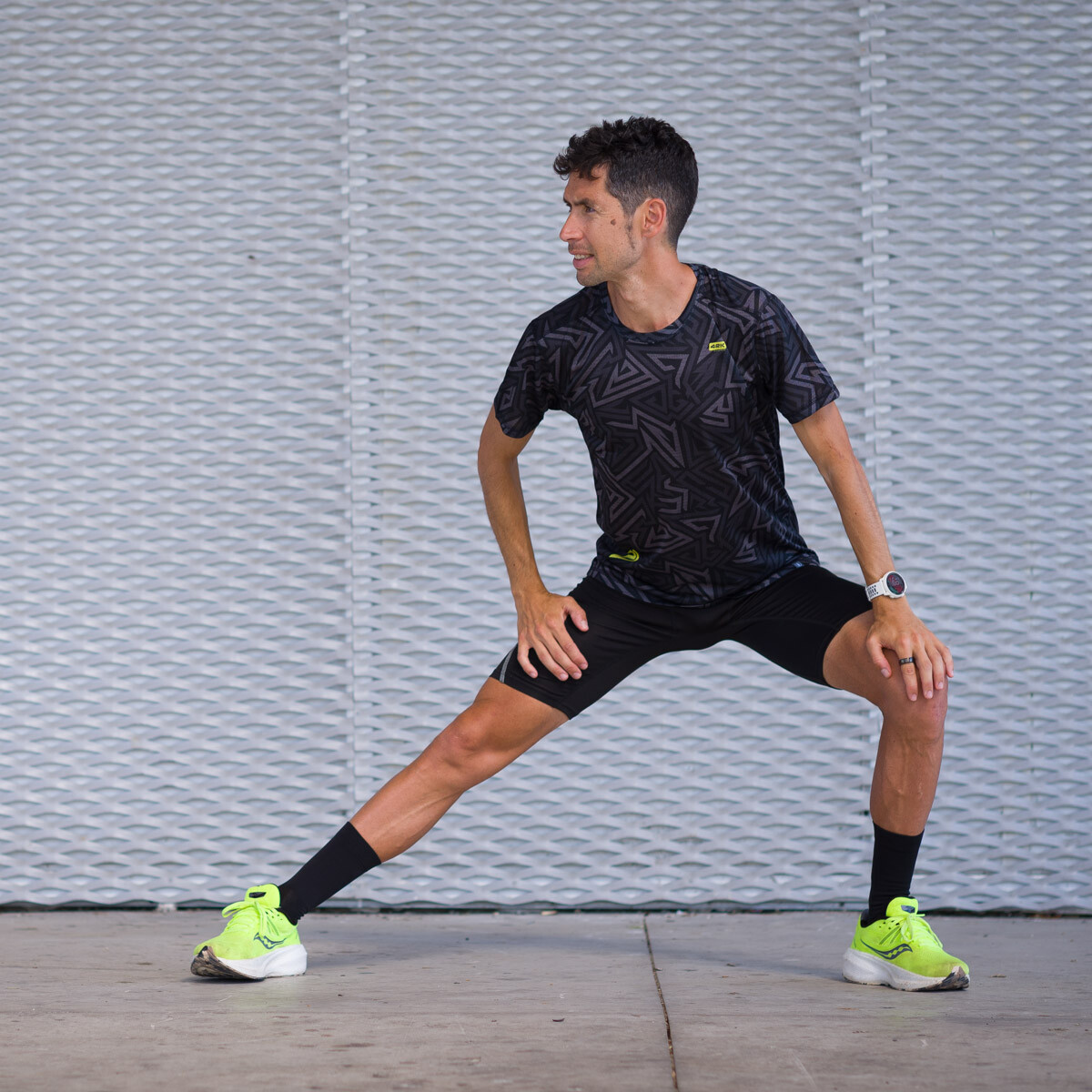
Interval Run. Depending on our objectives we will do a number of repetitions or others during the race, alternating between high intensity intervals and lighter recovery. For example, a runner with a 10K goal might start with a 6 x (2′ + 1′) fartleck doing the 2′ a little faster than the first threshold and easy recovery minute. Instead of going at a rhythm you can also do it by pulse. The ratio of time between intervals and recovery can vary depending on your goals and fitness level.
Variety of rhythms. It can be played with different rhythms and interval durations. You can run short, fast intervals, or longer, moderate intervals.
Varied terrain. If you are an athlete who prepares cross-country, choosing varied terrain (dirt terrain with moderate ups and downs, with curves...) will be very interesting and positive to achieve a good preparation for this modality.
Back to the calm. We will have to finish the session with a phase of lowering heart rate by doing a very light jog of 3'-5'.
Variability. Alternating between fartlek sessions and other types of training, long runs and recovery days is very convenient to maintain a balance in the training program.
Application of fartlek training by levels
Beginners. Beginner runners can start with shorter intervals and longer recovery. This allows you to gradually adapt to the intensity and build a solid base.
Intermediates. Intermediate runners can experiment with different work-to-recovery ratios, progressing to longer, more challenging intervals.
Advanced. Advanced runners can implement the fartlek as part of their weekly training plan. They can incorporate race-specific intervals and simulate competition conditions.
In summary, fartlek training in the running provides wide range of benefitsat improve endurance and speed until developing the mental resistance and the adaptability to different race conditions. Its flexibility and versatility make it an essential tool for runners looking to improve their performance and enjoy variety in their training.
Starting to run after 40 is very common. In the last decade, both in Spain and in many other countries, the number of people who start running when they are close to 40 or even when they have surpassed them has grown remarkably.
reasons for this boom of runners after 40? The first reason could be that correr (The running) is in fashion and it has been shown that it is not a passing fad. Running has become a way of "invest" in health, leisure, relaxation...
For more than a decade now, the number of people who run (especially in the age bracket that goes from 35 to 50 years) is at levels that were unthinkable in the last decades of the last XNUMXth century.

Another very compelling piece of information is the comparison of the current numbers of participants in popular tests (5K, 10K and 15K), half marathons and marathons with those registered 20 or 25 years ago; The spectacular increase in the number of tests, both asphalt and mountain, that has taken place in the last five years is even very striking.
Still the percentage of men who run is higher that of women, but in the last decade (especially in the last five years) the growth of women in the running It has been very big in Spain.
A good thermometer is offered by the registrations for the races, which confirm a progressive growth in the percentage of female participation. And when analyzing the female participation in recent years in popular tests, it is observed that the highest percentage of female runners is concentrated in the age bracket that goes from 35 to 45 years.
Furthermore, another reason why running is fashionable and becomes the option chosen by many people who decide to do sports after 40 is that it is a cheap way to do sports and you can easily fit into complicated work schedules and family obligations.
Many people acknowledge having landed in the running from 40 to be the most flexible option to do sports that they have found without depending on fixed schedules and with the freedom of being able to put on their shoes and go out for kilometers at any time.
Before starting to run after 40, you should consult your doctor
As long as you do not have any health problems, physical limitations or are overweight (running with overweight can be harmful to joints, tendons and ligaments), start running after 40 can be healthy and positive, especially if it means abandoning a sedentary life and resuming physical activity. However, if you decide to start running after 40, it is advisable take a series of precautions to avoid unnecessary trouble.
And the first of the precautions must be consult with your family doctor in case you advise against running for any medical reason (chronic pathology, risk of specific injury due to a previous problem, incompatible drug treatment or that may affect heart rate...).
If the family doctor sees no problems, you can start adding the first kilometers of Thief (Walk and run, the method that we will see later), although it is very likely that he will talk to us about the convenience of performing a general check (a checkup and a blood test) and even submit to a stress test or ergometry to check the real physical state in which we find ourselves. For running it takes a healthy heart because it is a demanding physical activity.

From the age of 40, especially if you have not run before or are running again after a prolonged period of physical inactivity or sedentary lifestyle, it is necessary to be sure that the running It is not going to become a dangerous sporting activity or one that poses any risk to health.
Health and sport they must go always hand in hand. If our trusted doctor considers a review, analytical test and/or stress test necessary, we must listen to him.
General recommendations to start running after 40
Before listing a series of practical advice for anyone who decides to start running after 40, it is convenient to make some recommendation (or precaution) to take into account.
After making it clear that the first thing is to consult with our family doctor and follow his instructions (in terms of check-ups and revisions), we must also insist that certain things must be very clear from day one.
The first is Take it easy. There is no need to be in a hurry to progress. You need a adaptation period which can be more or less long according to each person; Logically, the adaptation will not be the same for those who have practiced sports regularly as for those who have spent several years without performing any physical activity or with a sedentary life.
Act quickly. start running little by little and, at least during the first 4/6 months, no competitive goals. After the age of 40, the body does not respond the same to the efforts that it does at the age of 20 or 30. From the age of 30 you begin to lose muscle mass (according to studies, between 3% and 5% every decade), so at 40 you do not have the same muscle strength, nor the same elasticity and recovery capacity after the efforts.
Therefore, it is necessary to be patient and favor the progressive adaptations of the muscles to the effort.

In general, if you have perseverance and strictly follow a training plan of 3 days a week, the normal thing is that three or four months after starting to run you begin to notice improvement (logically, everything will depend from the starting point of the physical state of each person).
So, you have to have patience and perseverance to overcome the adaptation period of 3/4 months which is usually what is normally needed to notice improvement and begin to "enjoy." Consistency is the best ally in any sport, but in running It is crucial and especially in the first months, which is when there are more reasons for discouragement.
The objective is progress 'with head' and without haste. Age makes you lose strength, aerobic capacity, flexibility... When you start running after 40 you have to be very sensible with training and with the efforts that are made in them. 'Forcing the machine' in the first months is going to mean a very high risk of discomfort and, worst of all, possible injuries.
Getting injured in the first few months of starting to run can be very discouraging because how much or little progress you have been able to make will come to nothing if you have to stop due to injury.
Practical advice to start running after 40
1. Follow a training plan
If you are starting from scratch or after a long period of inactivity, it is very important Have a proper training plan to the starting state.
The recommended thing to start running after 40 is to have a training plan designed by a fitness specialist. This way we will have the security of doing things right from the beginning and avoiding risks of injury. With a physical trainer who designs a tailor-made training plan, it will be much easier and safer progress.
Another option to get started running is CaCo method (Walk and run). The CaCo method is recommended for people who start running from scratch, but also for those people who return to running after a long break (whether for personal reasons or due to an injury), since it will avoid problems in muscles, tendons and joints.
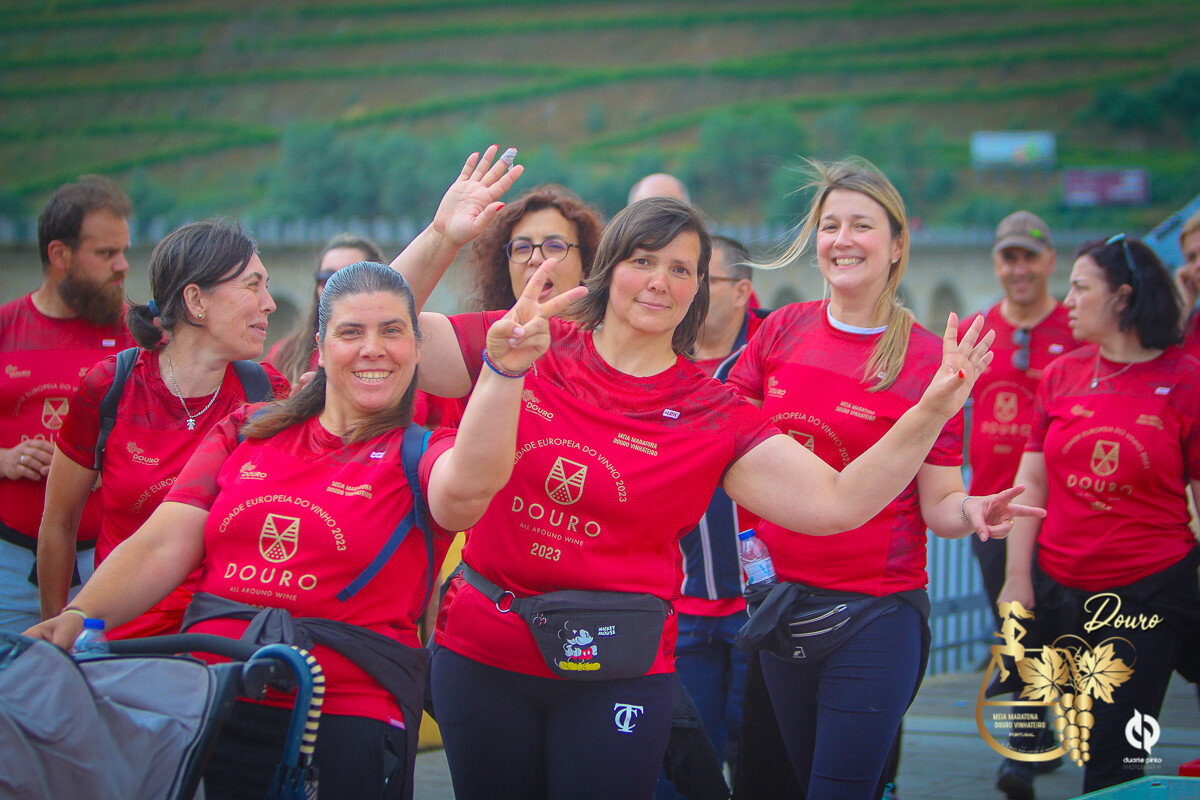
2. Invest in adequate and quality equipment.
It is not necessary to buy a state-of-the-art kit, but it is convenient correctly choose technical clothing and shoes.
The choice of slippers It is a subject that can be complex at first and that is why it is a good idea to seek advice from a specialized trade. You have to choose between more convenient to our footstepsa (supinator, pronator or neutral), weight (the weight is important to determine the ideal damping), number of kilometers weekly to be carried out and the terrain type on which you are going to run (dirt, asphalt...).
In our article 'Shoes to start running' We explain everything you have to take into account to choose a pair of shoes to start running.
The choice of technical clothing is, without a doubt, easier than shoes. You have to opt for light and comfortable clothing, that offer good breathability y speed of drying. In the article of this same blog titled 'Technical clothing to start running' A series of recommendations are detailed to know what to look for when choosing technical clothing to start running, especially what type of shirt and socks.
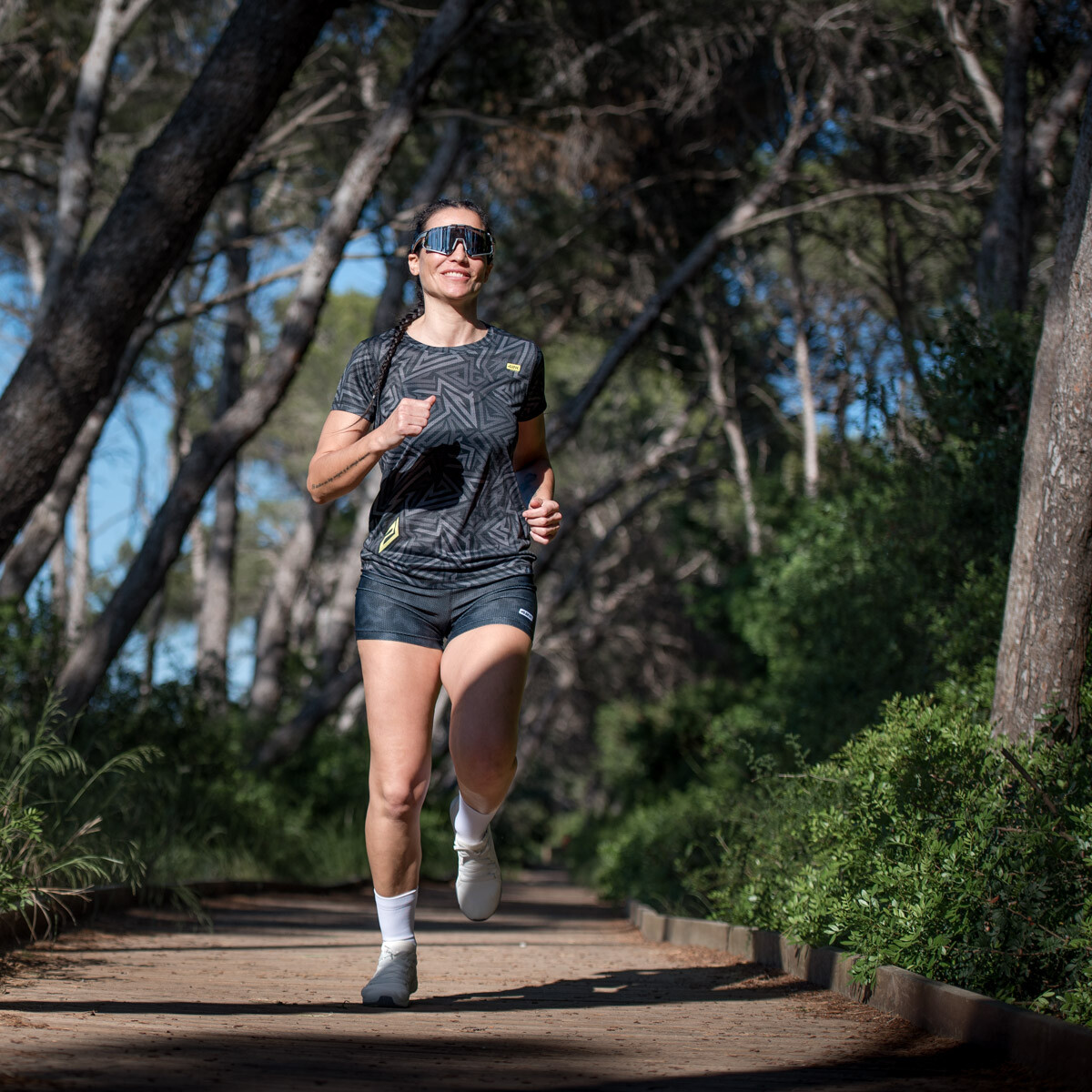
In our Online store You can find a wide range of technical clothing for running, both for men and women.
3. Warm up well before running
Warm up properly before running It is essential to prepare the body and especially feet, ankles, knees, and hips. There are no excuses for skipping the warm-up.
a good warm up It has many benefits: prevent injury, increase heart and respiratory rate, improve flexibility and improve concentration.
If you want to know more about the importance of warming up before running, you can do it with this article 'How to do a good warm-up before running'.
4. If discomfort appears, you have to stop
Act quickly. banish the idea of "no pain, no gain" (no pain no reward); pain is a warning that something is wrongSo anyone who decides to start running after the age of 40 and notices any persistent discomfort or pain should see a physical therapist or health professional to determine if there is a problem.

It is normal that during the first weeks (even the first months) the shoelaces, or what in scientific terms is called delayed-onset muscle soreness or DMAT, may appear to warn that the level of intensity of physical activity for which you are prepared has been exceeded.
That is, if one day you run faster or for longer than expected without having the appropriate physical condition, it is likely that you will suffer muscle fiber microtears which are the ones that generate the discomfort known as shoelaces.
The shoelaces are temporary and they go alone if you save a little repose and you combine it with gentle stretches and applying heat. What you should not believe is the false legend that 'the soreness disappears with more exercise' or that the remedy is to take sugar water; It's fake and it's dangerous. The shoelaces alert you that you have forced yourself too much, so rest for a couple of days and when they have disappeared, run again with caution.
What you do need to learn is how to differentiate stiffness from other muscle or joint pain that should put you on alert and ask for the opinion of a physiotherapist as soon as possible.
5. Healthy and balanced diet
Una healthy and balanced diet It is very important for anyone, but it is even more so in case of regular physical exercise and especially in people who start running after 40.
There are many variables that can affect the nutritional requirements or needs of a person (age, sex, weight, state of health, intensity of physical activity at work, intensity of sports activity...), but as a general rule it is necessary to bet on a complete diet that includes all the nutrients that the organism needs: carbohydrates, proteins, vitamins, fats and minerals.
And a very important aspect of a healthy and balanced diet is to take care of hydration, especially in summer. It is recommended to drink 1,5 to 2 liters of water a day, although hydration needs may vary depending on physical activity, temperature, humidity... On the importance of hydration, the article on our blog may be interesting for you titled The risk of dehydration in running.
If you have doubts or want to make changes to your diet and you don't know how to do it, it is advisable that you go to a registered dietitian-nutritionist.
6. Work the strength
If you're going to start running after 40, you must work the force. Strength training is very important for the entire population from the age of 40 (muscle mass begins to be lost from the age of 30) to maintain adequate muscle mass and to provide a state of healthy fitness as they get older. fulfilling years.
Stronger muscles will help us improve our performance in the gym. running. Force work is essential to progress and improve as a runner, but it is also very important to prevent injuries. It is essential to include strength work in the weekly training routine.
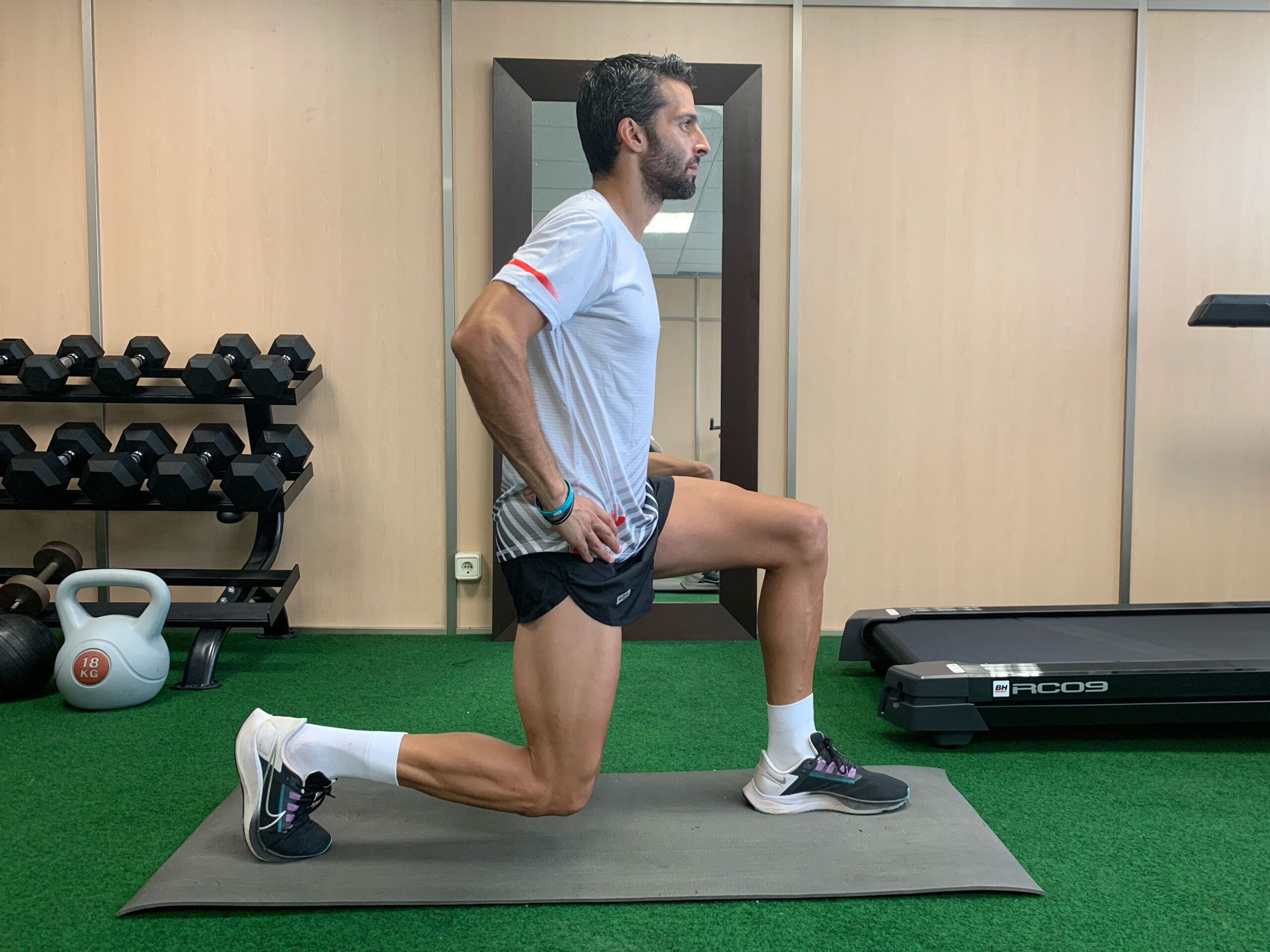
In our blog you can find different articles to learn much more about strength training and the importance it has to improve in the running. If you are starting to run or have been running for a while and don't know how to start working on strength, these articles can be very useful: 3 basic strength exercises for legs, Core training for runners o Strength training, essential for runners.
7. Give importance to rest
rest is very important to progress in the running. You have to take the steps with patience and without wanting to train more than you should.
Especially when you start running after 40, rest is just as important to progress as training. The rest allows the muscles to recover to face the next training session. Do not listen to anyone who tells you that to progress you have to run almost every day or that a single day of rest is enough to recover.
If you start running and try to go out every day to train, you will be taking a huge risk and you will surely end up suffering an injury or discomfort that will leave you in the dry dock.
A good start can be can be run 3 days a week and dedicate a fourth day to hard work.
8. Don't be in a hurry to put on a number
Don't be in a hurry to compete do not rush. It is advisable to increase the intensity of training gradually and following a plan, but without thinking about competitions or competitive challenges.
If you start running after 40, it is advisable dedicate between 4 and 6 months to training and to get your body used to the changes that the running will produce in it. Don't be in a hurry to sign up for a race no matter how much they tell you to. "It's the same as a workout, but with a bib".
It is true that the running It is a sport that asks for new challenges as you progress. Trying to improve yourself physically and mentally is very good, but you have to do things wisely. Participating in popular races and starting to monitor the results can be the perfect fuel you need to move forward and try to improve, but you have to take the steps very sensibly and without rushing.

If you follow a training plan with perseverance and seriousness, you will be able to go increasing pace and race time progressively. When you're able to consistently run 45 to 50 minutes without difficulty, it may be time to become a popular runner and enjoy the thrill of putting on your first 5K bib.
When you can complete 60 minutes of continuous running without difficulty, you can try the most popular distance: the 10K.
A tide formed by 10.000 runners and runners will dye the streets of Porto blue the next day September 10. That day an emblematic race is held in "the capital of the north" of Portugal: Dragon run.
Dragon run (Dragon Race) is a spectacular sporting event that was born with the desire to offer thousands of fans of the FC Porto (Futebol Clube do Porto) the opportunity to run alongside the Estádio do Dragão, the stage where one of the biggest clubs in Portuguese football plays and one of the classics of European football.
Supporters of FC Porto, a club founded in 1893 and whose players are nicknamed dragões (dragons, after the mythical creature that appears on top of the shield) have the opportunity for one day to get together to participate in a 10-kilometer race or in a 5 km walk/walk.
The start and finish of both tests is located next to the Estádio do Dragão, scene of all the emotions of the porters, as the fans of the club are known.
The traditional colors of FC Porto are blue and white, which is why blue is the color that all runners who start the 10K will wear on their shirts and all people (grandparents, parents and children) will also wear blue. ) to participate in the 5K walk/walk.
T-shirt Nature Blue
42K has the honor of being the technical brand chosen by the organization of the event to dress the 10.000 people who come together in the Corrida do Dragão.
The chosen model is the Blue of the collection Nature. The collection Nature It has the particularity of using a new version of our NeoTec micro-perforated fabric that has been made with 50% recycled polyester yarn.
The NeoTec fabric is ideal for running for its lightness and breathability. The technical t-shirts Nature They are perfect for sports airIt is free at any time of the year, but it is in warm weather when it stands out for its good qualities of breathability, lightness and comfort.
The t-shirts of the collection Nature They have treatments that guarantee quick drying (“DRY-TEC”), softness to prevent irritation (“SOFT-LIGHT”) and color fixation so that it does not lose vibrancy despite washing (“DC4”).
Is the important strength training? The answer is a resounding 'yes'. What's more, I would say that strength training It is important for the entire population. (logically adapted to the circumstances of age, mobility and needs of each person) but it is essential for runners and runners of any level.
Anyone who runs regularly has to place a lot of importance on strength training.
Strength training to prevent injuries and gain speed and endurance
Only with stronger muscles can gain stamina and speed. If we want to improve as runners, we must include strength training in our routine or weekly training calendar.
In addition to helping us improve our sports performance, strength training will help us to Prevent injuries.
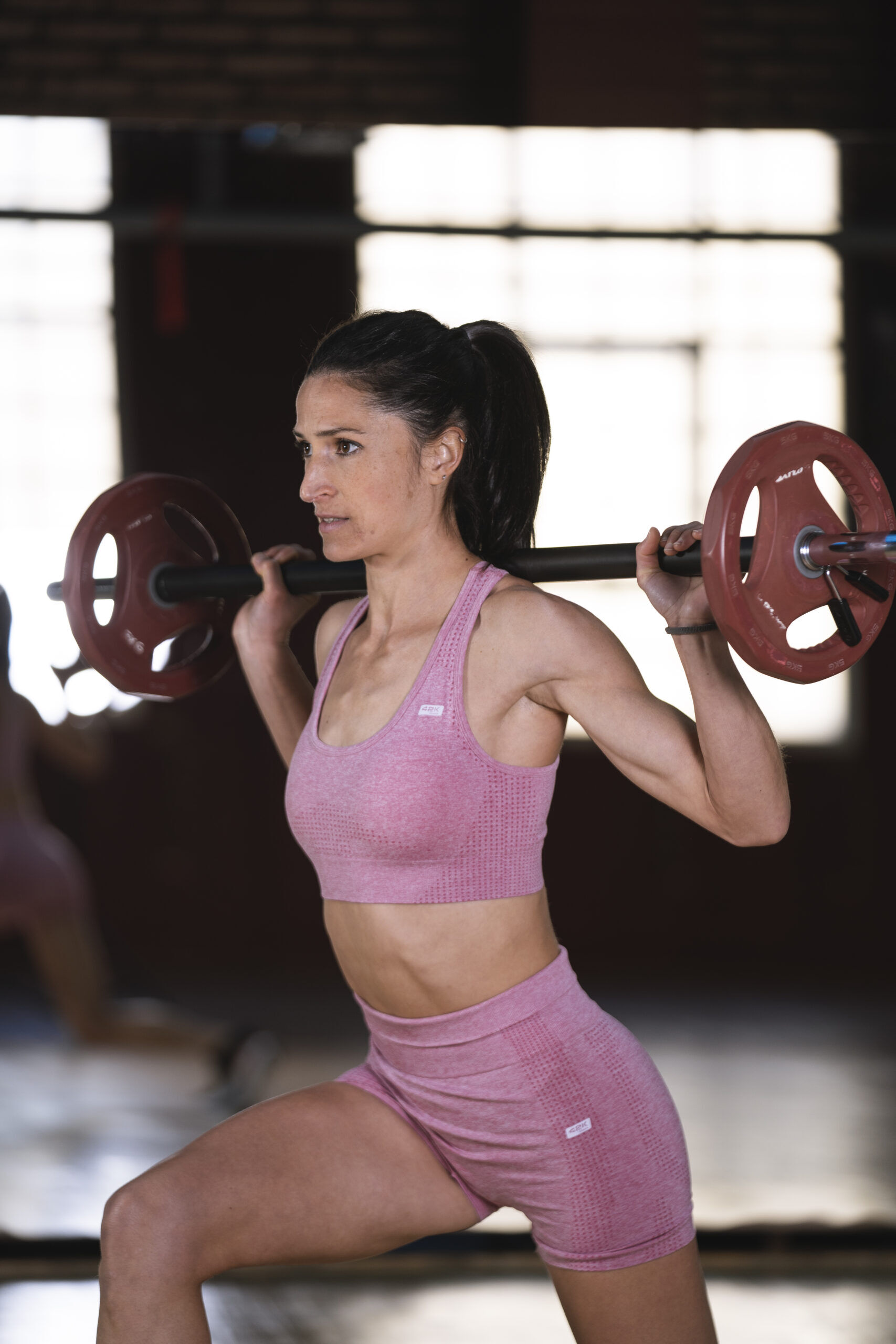
The benefits of strength training are many, but in the case of running They are fundamentally these:
- Prevent injuries. A strong musculature, in addition to protecting against falls, impacts, etc., also helps us to have better postural health in our daily activities (for example, sitting correctly) and when running. Many runners and runners suffer, for example, back problems due to the lack of adequate leg muscles that prevent them from maintaining a correct posture while running. A strong musculature contributes to the stabilization of the bones, which helps to reduce injury problems, joint pain, etc.
- Gain speed, coordination and power. Some people mistakenly think that to run faster you have to run more kilometers; It's sometimes surprising to see workouts from popular runners that have more miles per week than professional athletes, but don't spend a single day specifically working on strength, or at most include a hill session.
- be more efficient running. When strength training is given due importance and is worked correctly, greater efficiency is achieved when running; that is, with less effort you get better performance because you earn speed y resistance.
Strength training is beneficial for the entire population
In general, strength training has many benefits for the health of the entire population: kids, adolescents, adults and, of course, also for the elderly or the elderly population.
As pointed out by the National Committee of Child and Adolescent Sports Medicine (2018), there is scientific evidence on the positive effects of strength training in kids and adolescents; and they are these:
- Increased strength and power.
- Increased bone mineral density.
- Injury risk reduction.
- Improvement in motor skills such as running, jumping, throwing...
Regarding the elderly or the elderly population, there are many studies that in recent years have underlined the importance of strength training to have adequate muscle tone when reaching advanced ages.
Because it is the lack of muscular strength that prevents a large population of the elderly (and that are not even in the elderly) from having adequate mobility or from simple day-to-day functional tasks (getting up from a chair, climbing stairs , pushing the opening of a door...) become difficulties that generate dependency.
La osteoporosis and sarcopenia, two problems generally related to the aging process, can be prevented or at least minimized through physical exercise and especially regular strength training.
La sarcopenia It is the progressive and generalized loss of muscle mass that implies weakness and incapacity for mobility, which has as an immediate consequence the loss of quality of life.
La osteoporosis It is a disease that weakens the bones making them very brittle. Over the years, bone mass is lost, but it is after the age of 70 when the problem can worsen.
How to do strength training? If possible, with a sports training professional
We already know why you have to do strength training and now we are going to talk about how.
It has become clear how important it is to perform strength training if we really want to improve our performance as runners, but how to do it?
My first advice would be put yourself in the hands of a qualified professional to know which exercises can benefit us the most and to learn the correct execution technique for each exercise (what loads to use, how many repetitions to perform, how many series, how to combine the exercises...).
The guidance or advice of a sports training professional seems especially advisable if you have never done strength training before. A poor execution or incorrect combination of exercises can cause unexpected problems in the form of discomfort or injury.
And surely there will be someone who thinks “but a trainer or physical trainer is going to cost me money”; Yes, of course, but it is the guarantee of doing things well and that strength training really brings us the expected benefits.
In addition, strength training must be designed and structured for the needs or objectives of each person, hence the importance of having the advice of a qualified professional. Because strength training is not the same for someone who wants to prepare for their first 10K as it is for someone who has been running for a while and wants to prepare for the marathon or a trail race.running.
Strength training must follow phases or stages
Also, and this is very important, you have to follow an adaptation process; We cannot start strength training right off the bat without going through an adaptation phase (getting the muscles used to light weight exercises).
After the adaptation phase, it will be necessary to go through a general preparation phase (increasing the range of exercises and also progressively increasing the loads/weights) to finally reach a specific preparation phase, in which those muscles that may have the greatest importance when running (or that can help us most in pursuing a goal, whether in a 10K, a marathon or a trail testrunning ).

A piece of advice that I usually give after having overcome the adaptation phase is the performance of some tests that will help us to know where we start from. One could be the classic estimation 1 RM (Maximum Repetition); another could be the vertical jump test “Squat Jump” to determine the 'explosive force'.
Logically, to carry out and assess these tests we need a physical activity professional; Based on the results of these tests, the physical activity professional will be able to guide and guide us with strength exercises. The correct planning of strength training is essential to obtain the many and satisfying benefits that it can bring to anyone who wants to improve as a runner.
Strength Training Tips for Runners
Arrived here some reader or reader may think "And you're not going to give advice on which exercises are best suited for runners?"
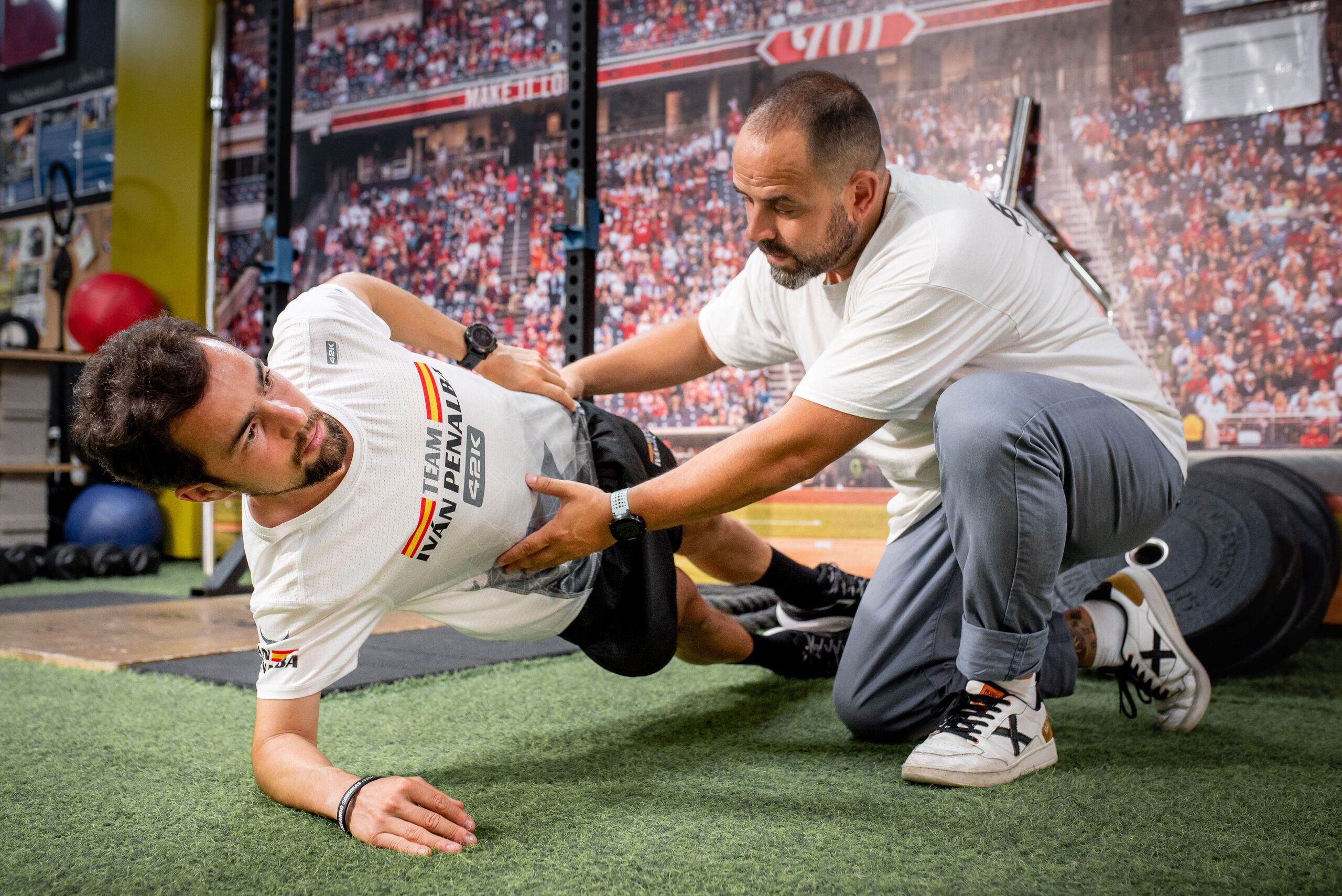
I sincerely believe that the best advice I can give is to put yourself in the hands of a qualified physical-sports activity professional to obtain the greatest benefits (and in the shortest possible time) from strength training, but I know that someone will feel disappointed if they do not I get "wet" at least a little, so here are a few tips that I consider necessary.
- Do not copy routines or plans other people's strength training. Someone who has been training for a long time can do exercises and move loads that should not be those of someone starting from scratch.
- If you join a gym and start from scratch with strength training, you can request the help of its staff to guide you on the initial routine; If you have already worked on strength before, you can inform them of your sports goals and ask them to recommend suitable exercises for it.
- Perform “classic” compound exercises, that is, those that involve different joints and muscle groups: squats (classic squat and Bulgarian squat), strides (backwards, forwards and sides), glute bridge, dead weight, rowing with bar or with TRX, bench press o Push-ups y dominated (assisted).

- Include plates Yes or yes. There are very different ones and they do not require material, so it is easy to make them even at home. The plates help strengthen the famous 'core' (you can read an article on our blog titled «Core training for runners»), a very important part for any runner. Planks allow you to work many muscles: abdominal, buttocks, shoulders, chest, upper back...
- Be careful with the loads / weights. with strength training our goal should be to gain strength, but not increase muscle volume inadequately.
- How many days of strength training? well at least 2 days a week trying not to be consecutive days.
- How many repetitions and how many series? It's hard to answer this, but a basic rule of thumb for beginners might be 3-4 sets and 10-15 reps. It would be desirable that strength training take us between 30 and 50 minutes and that it be a circuit that allows us to work all the large muscle groups.
- Do not work exclusively the legs. One mistake some people make is thinking that strength training for runners should only focus on leg exercises. You have to do exercises that involve all the large muscles of the body. You have to work the whole body to avoid muscular imbalances.
Bibliography used:
National Committee of Child and Adolescent Sports Medicine. Strength training in kids and adolescents: benefits, risks and recommendations. Arch Argent Pediatric. 2018 Dec 1;116(6):S82-S91. Spanish. doi: 10.5546/aap.2018.s82. PMID: 30525318.
A question I often hear is... "But is it really important to include running technique exercises in my training?" My answer is always this resounding: «Yes, very important». Immediately comes the following question: "And what running technique exercises should I do?"
In this article I will explain the benefits what do the running technique exercises and I am going to make a proposal of those that I consider appropriate for before and after….
Running technique exercises
If we carried out a survey among runners and runners, we would find a large number of proposals on which are the most effective or most recommended running technique exercises. The truth is that each athlete has their favorite running technique exercises. But what I'm sure everyone agrees on is stressing the importance of running technique exercises for benefits which undoubtedly have to improve as a runner.

And what are those important benefits of running technique exercises? Well, basically there are these three:
- Running technique exercises help to be more efficient in the race.
- Running technique exercises help avoid many unwanted injuries.
- Running technique exercises help increase coordination and agility when it comes to running.
There are several expert studies that affirm that 15-20 minutes of running technique exercises in each training session imply, after an 8-week program, an evident improvement in the athlete's running technique.
The problem of many people, especially in the area of the popular runner, is that they believe that doing running technique exercises is a waste of time because they don't get tired; In other words, they believe that they would be making better use of their time by running more or doing series or anything else that requires effort and, therefore, fatigue. Well, it's not like that.
Practical case that demonstrates the improvement of the running technique
Running technique exercises are essential to progress in the world of running and we are going to demonstrate it with a simple practical case.
Let's imagine that we are going to run a 10K, that test that we are preparing with so much effort and dedication to run it in, for example, 40 minutes; but it turns out that with our running technique we usually support with the heel and it takes us 220 milliseconds to get the foot off the surface instead of supporting the metatarsus (on tiptoes) which would allow us to take 200 milliseconds. We may think that the difference between heel and metatarsal support is imperceptible in time because it is only 0 seconds, but let's remember that we are talking about 02 kilometers.
It is enough to carry out a simple calculation to understand what we are talking about: 40' x 0,02 x 170ppm (steps per minute) = 136 seconds, which is equivalent to nothing more and nothing less than 2 minutes and 16 seconds. It is clear, then, the difference that running technique can make in order to run more efficiently and therefore lower the final time in a competition.
It doesn't matter or it doesn't matter until you see that your marks can improve a lot, which is why it's really important to perform running technique exercises in each training session: yes, in all of them.
And once the importance of running technique exercises to aspire to improve race times has been demonstrated, the next question is logically... but how do I do them, when and what exercises?
The ideal would be to put yourself in the hands of a qualified physical activity and sports professional. Having the planning and evaluation of a professional in the field will guarantee you better efficiency at work.
How to do the running technique exercises and when?
The first thing would be to choose a battery of exercises that I will leave at the end of the publication. In my personal case, there are running technique exercises that I put more emphasis on on the days of the series and others that I prefer for after filming as a complementary session.
These drills need to be done for 30-40 meters + a 30-40 meter straight as well to achieve that positive transfer.
The moment to carry out this complementary and at the same time almost "mandatory" training to improve our running technique will depend on the objective of the day; If we do 'series' work, it would be around 15-20 minutes before the effort (whether interval or fractional work), in that specific warm-up phase that will help us finish activating by interspersing some stretches at the end.
To make it clearer, the complete training would be like this: continuous running + active joint mobility (if you usually do it) + running technique (10'-15') + 2-3 straight lines + series + gentle jogging to release.
We have talked about the days of series, but there are also days of soft shooting; these days we will carry out the career technique work after filming, as a specific complementary work.
Personally, on light rolling days I am in favor of dedicating more time to running technique exercises, with about 30 minutes. I explain it in a concrete way: I do a 12-kilometer run below my first threshold and then I do about 30 minutes of running technique exercises. And so that those 30 minutes do not become too boring for me, I try to give it a positive transfer: every 5 minutes I do a straight line of 100-120 meters at 90%.
As a recommendation, I would like to point out that the running technique work that will allow us to improve efficiency and economy when running during the race must be done in a planned manner and we should not do it (unless it is an objective) with a lot of fatigue .
What running technique exercises to do?
We have reached the expected point. The exercises should start from the most general to the most specific, that is, from arm mobility to the complete movement of the race.
Exercises for series (each athlete has their own but this is an option):
Guideline recommendation to follow: 30-40 meters of exercises + 30 meters of fast running + walking lap.
- Arm mobility (optional).
- Reactive ankle.
- Lateral race or lateral displacement.
- Heel-buttock with one leg with anterior cycle.
- Heel-buttock with both legs with previous cycle.
- Soldiers (also called Russian steps).
- Skipping short.
- High skipping one leg.
- High skipping both legs.
Exercises for after shooting (each athlete has their own but this is an option):
These are some of the different running technique exercises that exist; It can also be an option to do these exercises one day and another day only wall drill + stair climbs with drives.
Guideline recommendation to follow. 30-40 meters of exercises + 30 meters of fast running + walking lap.
- Arm mobility (optional).
- heel toe
- Reactive ankle.
- Hopping feet together.
- Lateral race or lateral displacement.
- Heel-buttock with one leg with anterior cycle.
- Heel-buttock with both legs with previous cycle.
- Soldiers (also called Russian steps)
- Skipping short.
- High skipping with one leg.
- High skipping with one leg and the other reactive ankle.
- High skipping with one leg and the other Russian step.
- Skipping high offset one leg (''African dance'').
- Skipping high every 3 movements one leg high.
- Skipping high with both legs
- Triple Seconds.


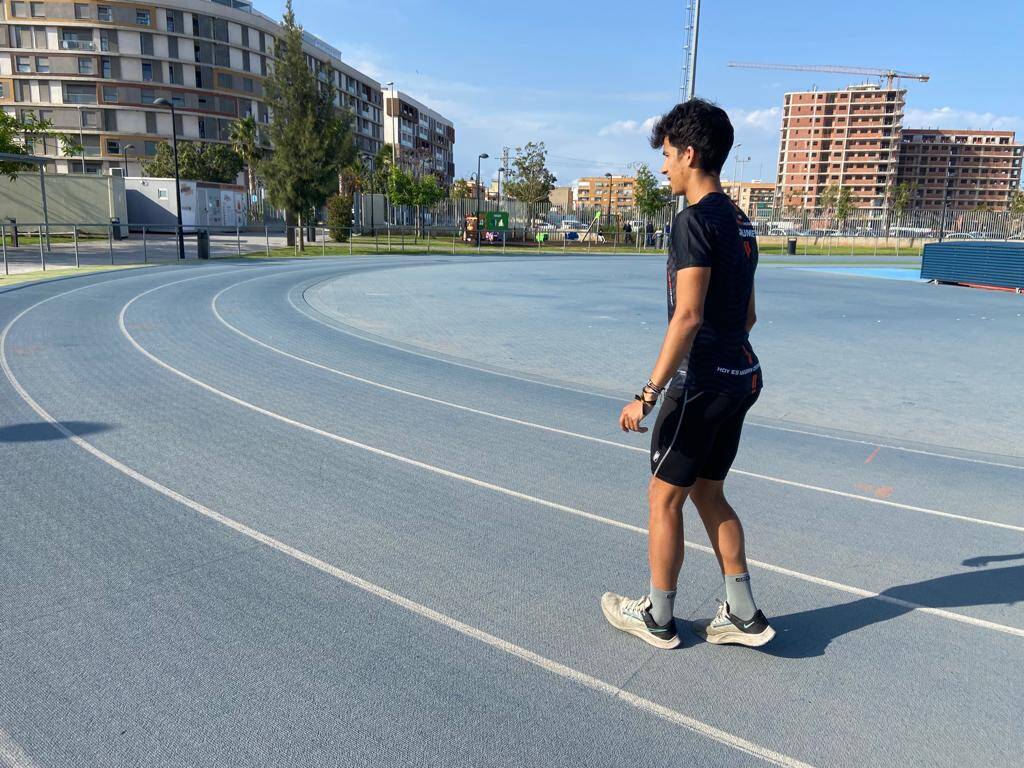
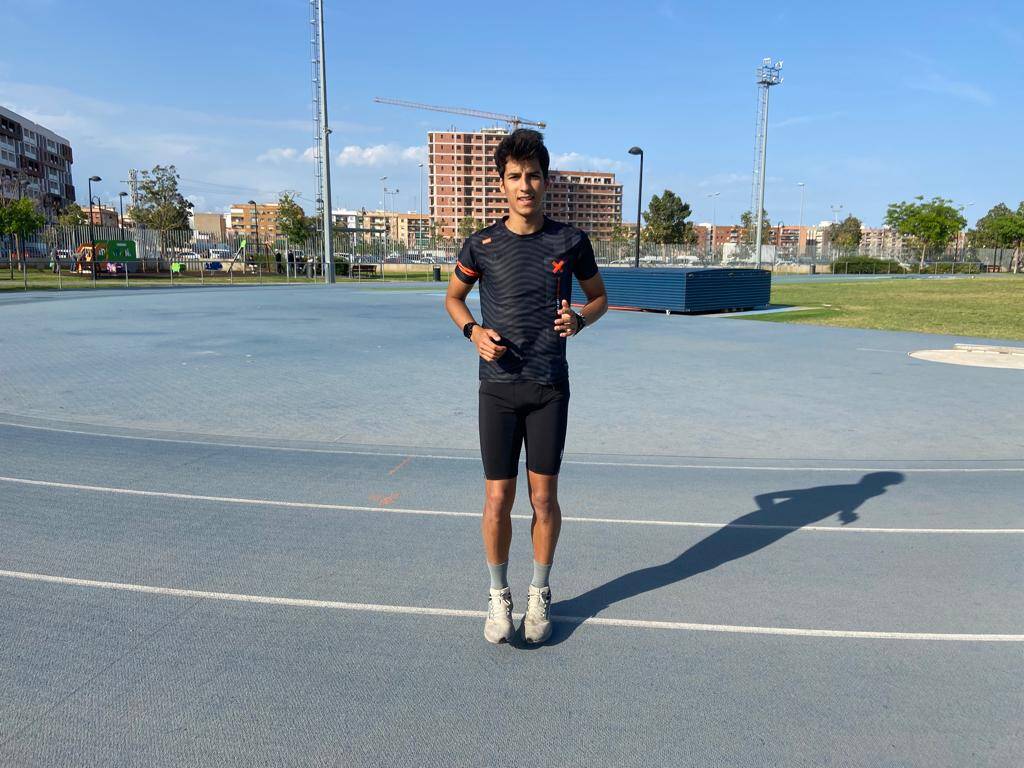
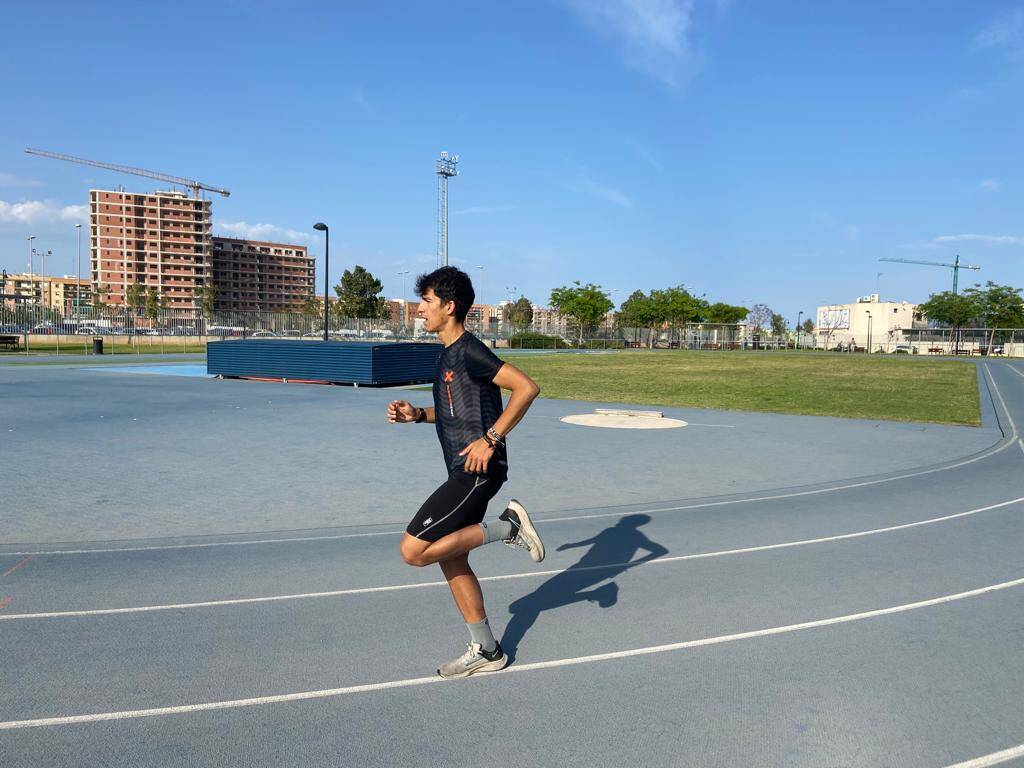

Glossary of terms
skipping: Traditional running technique exercise in athletics. It is executed raising the knees above the waist. It is one of the usual exercises in warming up since it involves activation in a very effective way by assuming the increase in heart rate and, therefore, the increase in circulation. It can be done on the ground (without displacement) or by smooth running.
wall drill: They are performed with the hands resting on the wall or on a railing and are used to determine the correct posture for the race: what should be the inclination of the trunk, what should be the knee and hip flexion, what should be the plantar flexion...
reactive ankle: It is an exercise similar to jumping rope but with alternate feet.
Little soldiers: Strides with straight legs. You have to try to lengthen your strides with your legs straight but driving only from the ankle.
Bibliography:
- Souza RB. (2016). A videotaped, evidence-based analysis of running biomechanics. Phys Med Rehabil Clin N Am 27(1):217–36.
- Moore IS. Is there an economic career technique? (2016). A review of modifiable biomechanical factors that affect running economy. Sport Med. 46(6):793–807.
- Mero A, Komi PV, Gregor RJ. (1992). Biomechanics of sprinting: a review. Sport Med. 13(6):376–92.
Javi Guerra becomes the new ambassador 42K. The Segovian athlete is going to collaborate with 42K and it will be the image of one of the new collections of technical shirts that will be released in 2023.
For 42K It is a great honor to have among its sports-ambassadors the four-time champion of Spain and one of the great references of the great Spanish fondo of the XNUMXst century.

Javi Guerra, four times Spanish marathon champion
On April 16, he won his fourth Spanish champion title at the Zaragoza marathon (ten years after winning it for the first time in La Coruña), distinguishing himself as the dominator of the Spanish marathon for the last decade, a discipline in which he has various participations in world and European.
Javi Guerra's great sporting objective is the 2024 Paris Olympic Games. The classification for the next Olympic event will be decided in the next Seville marathon, which will take place on February 18, 2024 and will host the Spanish Distance Championship.
Javi Guerra will look for the minimum in Seville to qualify for an Olympic event for the third time (he was an Olympian in Rio de Janeiro 2016 and Tokyo 2020). In the Seville capital he has experienced great sporting moments (he won his second and third Spanish champion title there in 2018 and 2020, the latter with his personal best of 2:07:27) and his determination is to prepare thoroughly this year to achieve there the right to be an Olympian in Paris 2024.
More than two decades in the elite
Javi Guerra (Segovia, 1983) has been in the elite of national and international athletics for more than two decades. His international sports curriculum began in the junior category with 9th place in the 2001 European Cross Country Championship, which earned him a place to compete in the Junior World Championship that same year. A year later he was summoned for the World Junior Athletics Championship in the 5.000 meter event (15th).
Between 2005 and 2010 he defended the colors of Spain in various world and European cross country. In 2009 he climbed to the top of the podium in the Spanish 10-kilometer route championship and in 2013 he registered his name for the first time in the list of Spanish marathon champions, a list of awards in which his name appears four times: La Coruna 2013, Seville 2018, Seville 2020 and Zaragoza 2023.
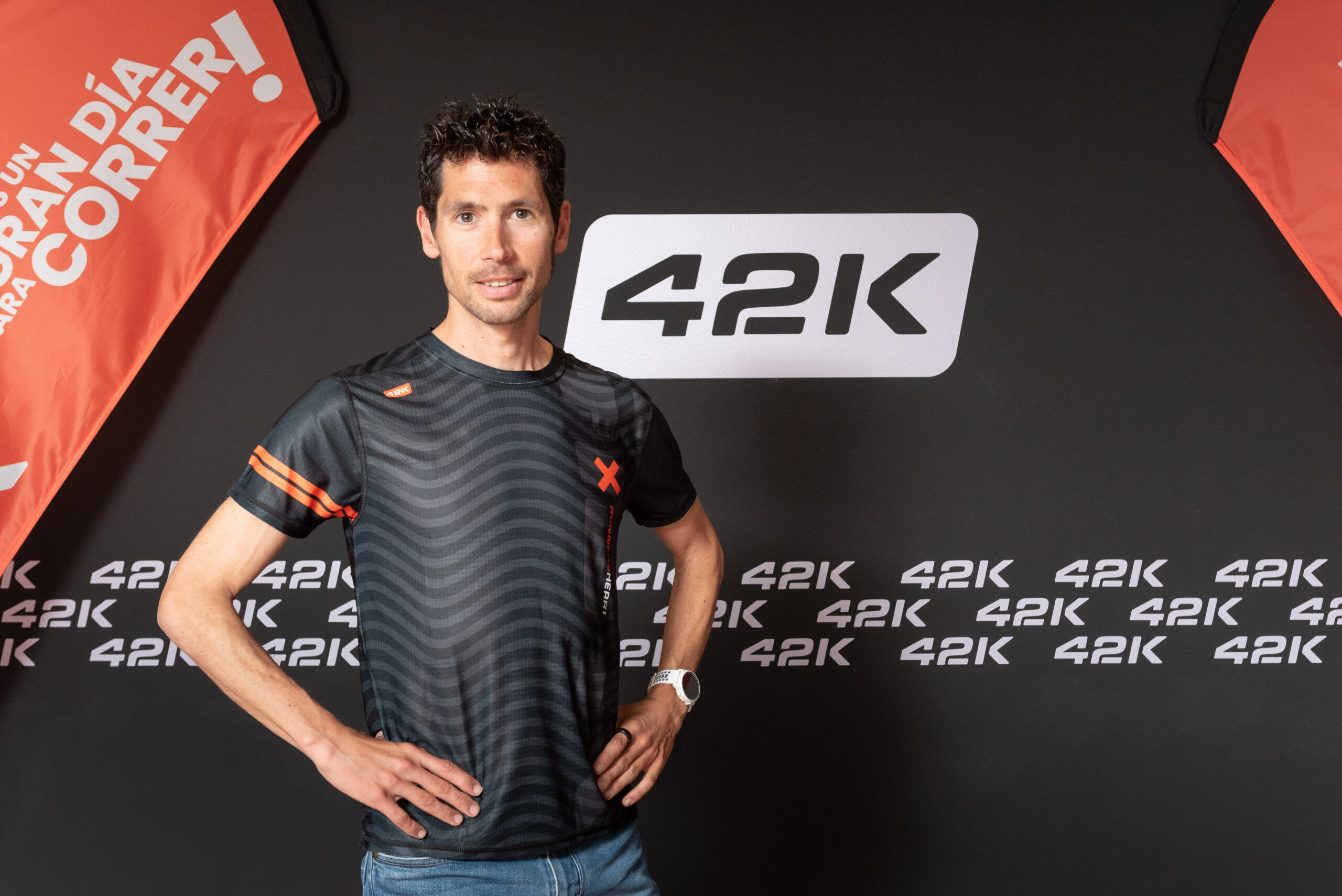
Javi Guerra's sporting longevity has a family history in his father, Paco Guerra, who managed to be the Spanish cross country champion in Amorebieta at the age of 40. The story of Paco Guerra is surprising because he left athletics at the age of 23 and returned seven years later to once again rub shoulders with the best national cross-country runners and become international in the European cross country.
Javi Guerra's best marathon records
- 2:07:27, Seville marathon 2020 (10th place, champion of Spain).
- 2:08:36, Seville marathon 2018 (4th place, champion of Spain).
- 2:09:33 London Marathon 2015 (ranked 7th)
- 2:10:19, Madrid marathon 2019 (5th classified)
- 2:10:55 London Marathon 2017 (ranked 9th)
- 2:11:01, Tokyo Marathon 2016 (ranked 9th)
- 2:11:42, Zaragoza marathon 2023 (1st, champion of Spain)
- 2:12:00, Valencia marathon 2022 (30th classified)
- 2:12:21, La Coruña marathon 2013 (1st, champion of Spain)
- 2:12:22, European Championship, Berlin 2018 (4th place).
Javi Guerra's best brands
- 5.000 m: 13:46.12 (Gavá, 2007).
- 10.000 m: 28:53.03 (Avilés, 2009).
- 10K: 28:11 (Valencia, 2020)
- Half marathon: 1:01:21 (Valencia, 2020).
- Marathon: 2:07:27 (Seville, 2020).
Any athlete knows that injuries are the worst enemy which they can face. Injuries interrupt, stop, hinder, frustrate, despair... Injuries to the running They can be the main limit to making not only the dream of achieving a goal come true, but even being able to follow the path necessary to fight for the dream.
The physiotherapist David Valenzuela, CEO of BOX55, reflect in this article on the injuries in the running as the main limitation that any runner, amateur or elite, can encounter on their way to achieving an objective, a challenge, a dream...
Injuries to the running: the limits to training
“I thought that running was just buying some shoes. I started running because when I do my memories take me back to when I was a girl and ran through the fields of my parents' house.", a patient in the clinic recently told me while we were treating her son for a biomechanical overuse injury.
With him he remembered how his 'runner's headband' prevented him from enjoying his dream for a while, while at that time he was already looking forward to a new starting line, the 10k in Valencia, where his sports season began.
Many people agree in the belief that to start running, all you have to do is buy some shoes and go out for miles in the city, the park, the countryside or the mountains. And, they forget about the injuries in the running that they may suffer.
Running is just buying some shoes?
Indeed, to run it is enough to buy some Shoes of running. It is something within everyone's reach. Running is putting on some shoes, going out into the street and feeling a world of sensations that invade you while you train and the endorphins that you generate make you think that you can conquer the world and think that there are no impossible distances or times.
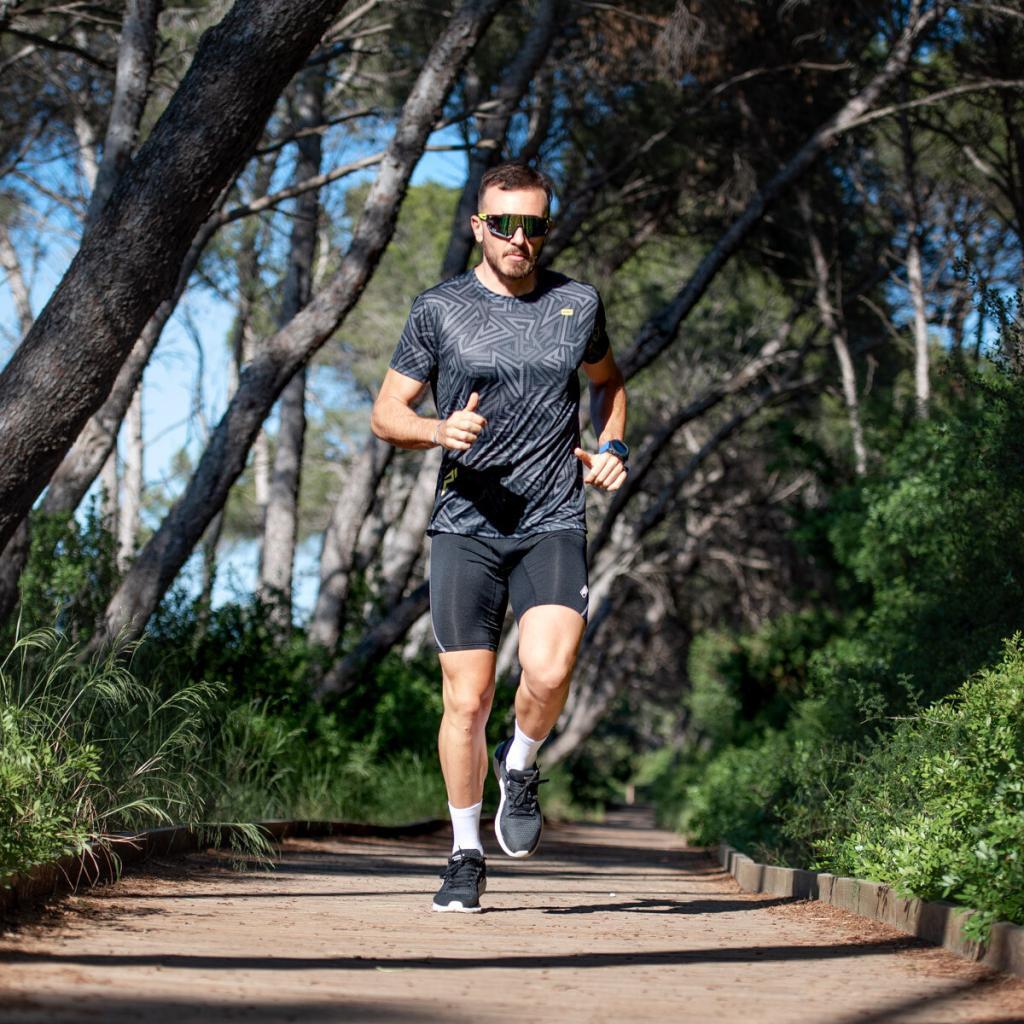
So, you look for a test that you think is accessible and there you go: new shoes, technical clothing to start running and to the mess. Then there will be another race and then another and another... And if things are not done well, then bad consequences arrive: the dreaded injuries in the running.
And some time after you bought your shoes and started running and competing in races, you find yourself on the stretcher at BOX55 thinking that what started as a dream has turned into a nightmare, a nightmare that prevents you from continuing to enjoy the sport. and of your daily life because there is an injury that does not allow it.
There are several items that must be known to be able to enjoy the sport you love with health, that sport that helps you feel happy because it generates health for you to enjoy life. And it is indisputable that being in shape improves your quality of life in all aspects.
There is nothing more powerful in the world than an idea and you have to keep in mind that you can do more things in your head than your legs can handle, therefore you will always keep going.
You must know your body because when you are growing, the physiological and biomechanical system of the human being gives you a perfect posture, a posture that adapts to growth according to the sport you practice; but this is something that is lost when you stop growing and your bones "weld", adapting to your lifestyle, which for work and personal reasons is unique to each athlete.
That's why there are limits to your training: injuries in the running.
To avoid injuries to the runningPut yourself in the hands of a physiotherapist
What should you do to ensure that your sleep and your health go hand in hand? How can you anticipate and prevent certain injuries in the running? You have to look for a physiotherapist who understands you and who wants to go with you on your adventure, who helps you achieve your dream, who adapts to your pace of life and understands your “madness”.
El physiotherapist is the health professional It will help you optimize your training, Ya que His goal is that you can train without injuries. The physiotherapist does not seek performance, he seeks to make you functional to prevent you from getting injured. The physiotherapist will always advise you objectively thanks to studies that indicate what injuries you can suffer to avoid them.
5 golden tests to prevent injuries in the running
1. The biomechanical study as the basis of the previous work in your training
The biomechanical study is a functional test group that allow to see that static and dynamic muscle deficits you have to start training functionally and generate preventive exercises that can help you enjoy your sport and optimize your workouts.
2. Electromyography as the basis of preventive work to optimize your training
Strength is a very important quality in sport because it improves (positive transfer) the other qualities of the human body such as resistance, speed or flexibility, but focusing on only that quality is a very common mistake. Uncontrolled force is useless. The muscle activation time is more important according to the laws of human biomechanics than the amount of force exerted by a muscle, since an inappropriate lower limb activation pattern generates muscle tears and tendinopathies associated with the load, no matter how strong you are.
3. Ultrasound as a structural basis for training
The tendon is a load-adaptive structure and the great “silent killer” because it does not warn of problems until, from one day to the next, you cannot even move and you suffer injuries in the running. An ultrasound to see how the tendon is assimilating the impact is very important, since a 10k race involves about 20.000 impacts that the tendon has to absorb and adapt to the load.
4. The study with video-analysis of the gait as a dynamic base of the training.
The gait study helps prevent injuries, since during human development and growth in different lifestyles adapted movement patterns are generated. When we start running they are accentuated, generating biomechanical anomalies that can injure us when we enjoy our sport.
5. The stress test
The most important test that you must perform on your body so that all the others make sense. Knowing how your "potato" works is essential; the heart is the engine of all the qualities and dreams you want to achieve. Nothing is possible without a healthy and strong heart..
Nothing exists without health, so in the next posts we will talk about how to prevent all injuries in the running that can keep us from our dreams.
As the saying goes, prevention is better than cure, but for both, BOX55 SPORTS PHYSIOTHERAPY is here to help you achieve your dreams. You are not what you achieve, you are what you overcome.
As we have already seen in previous posts, the AlimeTraining is a key factor in sports performance, especially in endurance athletes and the following moments:
- During the preparation of the competition, to achieve an optimal body composition.
- Throughout the test, to maintain peak performance during the competition.
- At the end of the competitive appointment, looking for an optimal recovery of the athlete.
However as important as the nutrition of the endurance athlete is the performance of frequent biochemical tests. It is known throughout the world that a blood test should be performed on any person once a year, but the importance of this type of analysis in endurance athletes intensifies, in such a way that it is recommended to do them every 3 months approximately.
The data obtained will be of great importance for the coach when periodizing the season with Workout and competitions as well as for the dietitian-nutritionist when designing the patient's personalized nutritional strategy. That is to say, biochemical data allow us:
- Do not compromise the athlete's health, as well as correcting possible values outside of normality.
- Periodize the season by the coach at the level of training and competitions, avoiding anemia and phenomena such as overtraining and chronic fatigue.
- Design a personalized diet plan to the objectives of the athlete that provides the energy and nutrients necessary to obtain maximum performance and good health.
When to perform endurance athlete analytics?
Well, there are some key moments throughout the season that provide relevant information about the endurance athlete, such as:
- At the beginning of the season, in order to assess the general health of the athlete as well as to have an initial reference after the vacation period.
- At the end of each training period with the aim of analyzing adaptations.
- At higher aerobic volume mesocycle (training block) to monitor the appearance of possible anemia.
- At the start of the competition phase, which must be reached in the desired state and well recovered.
- After achieving a good mark, to have future reference levels.
- With the appearance of illogical symptoms, such as muscle fatigue and weakness, dizziness, decreased weight and / or performance, etc.
Once the moments of the season are known in which it is important to carry out an analysis, it is necessary to know:
- What parameters offer us the necessary information?
- What should be the optimal results?
Pay attention to the following table:

In conclusion, the endurance athlete population of the importance of conducting medical tests such as biochemical tests and stress tests, since with sport an effort is required from the body that entails great stress at the metabolic level and whose consequences without poor planning can be serious.
Remember, physical activity is good for your health, competitive sport is not, so it is very important to carry a correct medical control and entrust training and nutrition to the relevant professionals, the Graduate/Licentiate in Physical Activity and Sports Sciences and the Graduate/Diploma in Human Nutrition and Dietetics, respectively.

Ismael Martinez Garcia
Dietitian
Collegiate Number CV00678
Master in Nutrition as a pillar in performance in endurance and ultra-endurance sports.
www.dietisticavalencia.com
Facebook - Instagram
Guillermo Peñalver: his imagination seeks to pamper the runner.
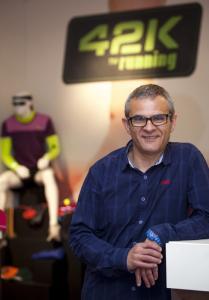
A sports entrepreneur with very clear ideas. The gradual success ´of his signature and the satisfaction obtained, have generated in Guillermo a debt with athletics. “A new generation of professionals is needed with the motto "Take care of the athlete" so that everyone ends up happy with each test; those who organize it, those who run it and those who sponsor it. "
You have to go beyond the businessYou have to take care of the athlete, understand the organizer and, above all, work with passion. It is not just about making money, with that idea you are not going anywhere. With these premises and a lot of imagination in the face of the crisis, Guillermo Peñalver has created a prestigious brand in the world of popular athletics. 42k running It is today synonymous with quality technical t-shirts. Guillermo is from Valencia and his success is the triumph of the businessman who knows how to adapt to circumstances. Passionate about popular athletics and his work, the crisis took him out of comfort and forced him to reinvent himself, that fashionable concept that can be perfectly applied to this moron from running, as he defines himself. Holy madness.
A failed padel match started him in the running in 2003 and has never stopped running. His party mates could not attend the appointment and, since he had proposed to play sports that afternoon, he put on some sneakers and went out for a run alone. The result a priori was not encouraging: 3 kilometers in total, stopping three times. However, he liked the experience of coming home sweaty. And since then he cannot remember how many times he has enjoyed that feeling.
Guillermo already worked in the family merchandising company that his grandfather created in 1949. With just over 20 years he joined the business that was later to change his life. It happened in 2010, when Guillermo realized that the t-shirts they gave away at popular races were of very poor quality, cotton garments that generate a towel effect and irritate the skin.
There was no point giving runners t-shirts that they couldn't reuse in their training sessions. And here begins your imagination and adaptation to the crisis. He believes that he has not invented anything, he has only made technical material accessible to popular brokers. That has been his great contribution; manufacture t-shirts that the organizers can afford to include in the runner's bag and take care of the athlete with garments that comply with 3 indisputable laws: breathable, that do not cause chafing on the skin and that do not lose color with the innumerable washes that sportswear require .
Your company has 16 employees, responsible for the entire process, choosing the thread, the dyeing and the design of the collections. Raw materials and manufacturing are Asian, but from spinning to pattern making, the entire process is carried out and controlled in the capital of Turia.

42k running has managed 1.500 events in 2015, in Spain, France, Italy, Portugal, Ireland, and even in the United Arab Emirates. Races such as the Madrid Half Marathon, the BBVA, the Massamagrell 15k, the Valencia 10K, the Santa Pola Half Marathon or the Martín Fiz de Vitoria Marathon trust him. For example, for this year's Liberty race you will have to make 13.000 T-shirts. Since she works for club and event organizers, she now intends to offer her products to runners in an exclusive online store that she will gradually build.
To all this, Guillermo continues running in the mornings. At 6:30 in the morning he goes out for a run for an hour, about 10 km. Also nothing. About 50 kilometers per week at a paw and three more based on strokes. Not bad at all for an amateur like him.
He is concerned about the turn popular athletics are taking, where distances and times are no longer respected, where there is a true madness to have our own photo on social reds crossing the finish line of a marathon, whether or not we are prepared for such a challenge. You have to help new runners to avoid animal attacks and the consequent misfortunes. It can't take more than 5 hours to do a marathon because that's insane.
The messages that arrive at 42k running through social reds they show Guillermo and his companions that the path is the right one, although he thinks this business has a roof. That is why you have to help and even pamper the runners. The goal is the professionalization of organizers, timekeepers and suppliers. All very reasonable, maybe going for a run so early really wakes you up, relaxes you and makes you think. We will have to prove it, right?

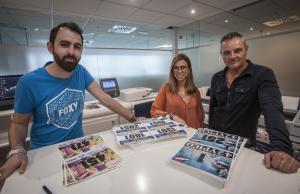

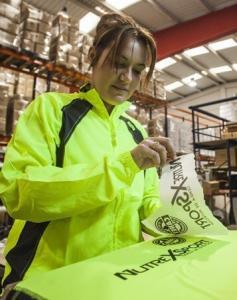
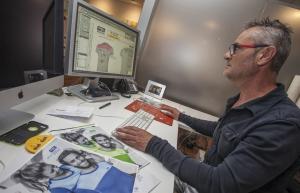

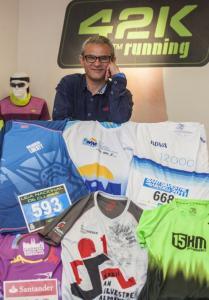
Text: Javier Lázaro
Photographs: Bárbara Sánchez
On the basis that I am against standard schedules and general, since some people will do well, others regular and others poorly, there is a way of training, where with common sense and having clear principles we can evolveNot so much as with a personalized planning, but more than following one that we have found on the Internet.
The first, from my point of view that we should use is pulsometer and if it is with GPS, the better. The elite or semi / elite train by time, because their maximum purpose is to subtract seconds from the clock, and they "die" to achieve them, but for the rest of mortals, the purpose is to evolve and preserve their "machinery" sample. Depending on the distance we are preparing, our work must be made up of 75 or 80% work in zone 2, and the majority in zone 3, we continue in a range between our 70 to 80% of our fcmax. In this pulse range our body always improves physically and cardiovascularly. But beware, the real one, not the theoretical one (Cooper's test or stress test). Imagine a person who has a theoretical fcmax of 180 bpm and his body, due to various circumstances, does not exceed 170 bpm, training at 80% would be an over-effort and he would be working in zone 4, close to 90%.
The second that we should include are progressive workouts and in reverse progression, to adapt to our body and muscles and improve our anaerobic system.Progressive, it could be 10/12/15 km, starting with a gentle pace and each km subtracting seconds from the clock, until finishing the last km at a pace equal to or less than a 10k. Then we would do a cool down. And of reverse progressionAfter a good warm-up, it would be to start the first km strong and reach the middle of the training in time progression and from there go progressively doing the slower km, until the end.
With these two types of progressions, we get many adaptations, physical and mental, we also learn to manage rhythms, which it will make us stronger in the race, since we can choose according to the race circumstance without dying in the attempt.

And finally, The famous series and slopes! The most important is go in progression, begin with short series with enough recovery and little by little add distance, then go down recovery, but only if we verify that we recover better (30/40 ppm) and very important, when the times of a series are already higher than the previous ones, it means that our body has already said enough and we must to leave, whatever series it is, is useless when the body no longer performs. The series on slope have many advantagesIn addition to empowerment muscular and anaerobic adaptationDue to the inclined position of the body, the metatarsal support and the impulse from the ankle are strengthened, which will make us stronger.
We would leave the workouts in Zone 2, over 70% or lower for post-competition regeneration or as a non-demanding exercise to burn calories without physical repercussions.
Remember, in the planning the most important in addition to the coach's criteria, is the principle of individuality and any planning worth its salt must be variable and adapt to the person according to their evolution.
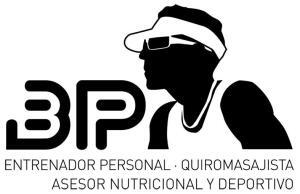
These days we have been reading articles related to sports health and some of them, like this one from Sporting LifeIt caught our attention and we want to share it with you.
The article talks about the fact that there are people who start to correr and what are they going increasing kilometers a week and training sessions without really knowing if they are doing the right thing.
We leave you some of the recommendations That they gave for you to analyze if you are doing well or if you are passing.
If you're beginner runner you must run three days a week and not exceed five even if you train for the marathon.

To avoid problems, follow the 10% law. Do not do more than 10% more km a week compared to the previous one.
If you have run 20 km one week, no more than 22 the next. Your heart adapts quickly, but your muscles, ligaments, tendons and bones need more time. If you want to give yourself more "cane", instead of doing more kilometers of running, swim, ride a bike, skate or do weight training.
If you are a intermediate / advanced level runner and you think you are overtrained, take this test: stand up abruptly. If you have 20 beats more than when you are sitting, is an indication that your "engine" is touched.
Other clues to overtraining are: rapid weight loss, poor appetite, disinterest in sex, delayed menstruation and recovery of heart rate slow after the effort of a competition, an intense shoot or between series (if you have 170 or more of maximum, at least you must recover 25 beats in a minute and if you have less than 170 bpm, you have to lower more than 30 beats) .
The first days of running They are difficult, but then running produces such a "hook" that the risk is not that you stop but in the excess that can lead to injuries such as tendonitis, plantar fasciitis, iliotibial band syndrome, etc.
If you are interested in this topic, we recommend you read the following article on our blog Eight warning symptoms of a body tired from overtraining
I will always remember the first day I put on my shoes and went for a run a year and a half ago. When I got home they laughed at me, but you haven't done a kilometer! Those words are burned to me and today I realize that you can run anywhere, you just need your will and shoes.
Fleeing from stress, and in search of those endorphins of happiness, of which I heard so much talk, I overcame my fears and little by little the km were more. that I completed. x
It was true, I was comfortable striding through the Alboraya orchard or the beaches of Alicante, You can run anywhere, you just need your will and your shoes. Wherever you are, each path gives you something, the smell of the fields, the sound of the waves, the familiar faces of regular runners who greet you and give you encouragement with the “come on, you have it.” Gaze. I think that now I am more receptive to all those little details, the endorphin load is so necessary ...
Little by little I got hooked on running to the popular races, and I started with 5km, 7km and my great challenge, the first 10 k and in my town, Alborada contra el Cáncer, in 2013.
Luckily, I have the friendship of a great runner, Luis Felix, who encouraged me, like his sister, to continue running. I have gained a lot, thanks to running, I found myself sharing my hobby with friends I hadn't seen in more than 20 years. It is a joy to meet all the runners, whether elite or not, and experience the great atmosphere of the races, the moments before, during and reaching the finish line.
Today there are already a few of 15km and I find myself wanting to continue, it is true that this running hooks.
The best, that people trust me and encourage me to Half marathon, so there I am, already registered. See you in October and I hope not to disappoint all those who support me, which are many. I see you at the finish line.
A hug to all!!!!!
Marga Marti
42K · All rights reserved

